Venkatesh Full Lesson
Think you're never going to hit the ball over 270 yards? Think you're doomed to play the white tees, swing over the top and slice? Think again.
So, yesterday.
Yeah.
Results.
What did you experience yesterday?
So what I experienced yesterday was a revelation that I can easily simplify my golf swing.
Okay.
Now I've been thinking about this quite a bit, you know, over last night, this morning.
So for me, every time I took a swing, I had maybe 10 different things that I thought about and worried about.
Yeah.
And in the end, I maybe did one of them right, right, right, so for me, it was basically hip.
Make sure that I have access, tilt, make sure I take the club back the right way, make sure I turn the right way, Make sure I take a full swing and then bring it back without actually getting on top over on top of it.
All of those thoughts were there yesterday that, yeah, that's like 10 or 15 things that you think about.
Yeah, and in the end, you end up not doing any of it, right?
You just go swing.
Yeah, exactly.
So yesterday at the range, what I experienced was the only thought that I had was okay.
I'm gonna get a good setup with a good knee bend and that's that was.
That's a routine thing.
And then all I did think back is, how do I take my hand back?
Where I can throw a ball or flip or skip a rock over the water?
And that's all I thought about yesterday at the range.
And then, so at the range, so we went full speed, hitting balls, day one.
Yeah.
What was the ball flight difference for you?
Ball flight, strike, distance, all of that stuff.
The distance was incredible.
The distance was at least, with my pitching wedge, for example, it was at least 10 yards, maybe, 15 yards on the pitching wedge.
On my six iron, it was a good 15 yards.
Plus, you have to add on that 10%.
with the ball, the ball balls, the range balls that were there.
You had to get those balls as really bad as you know.
So it was at least another 15 to 20 yard difference for me.
But the beautiful thing is I felt that the swing was on plane and I felt like a pro swinging.
The beautiful thing for me was I didn't feel awkwardness on my swing, which tends to creep into my game.
So when you say it felt like a pro swing for you, how?
what does that mean exactly to you?
So it means that, for me, it means the takeaway was decent.
But then, more importantly, when I came back to the ball, you know, I always had a feeling that I was, you know?
I had the side bend, which I did not have to think about, which I usually think about on every single swing.
I think constantly I need to do the side bend, then my hip hurts.
Here.
I did not think of the side bend, But I noticed that my side bend was there and the finish was virtually perfect.
So that was a great feeling for me.
So mechanics-wise, we didn't work on any mechanics.
I didn't think of one mechanic.
No positions.
Exactly.
It was just feel.
It was just feel, right?
So we simplified your thoughts, got more distance.
In terms of shot shape, how was that?
Oh, the shot shape was beautiful.
I mean, it was more of a draw.
Mine always is a fade.
Yeah.
You know, more than a fade.
But I cannot, I could not drive the ball until yesterday.
I've never, sorry, I couldn't, I have never drawn the ball ever.
Never?
Never.
Oh, really?
So that feeling of that nice, gentle draw.
was pretty incredible.
I can never draw the ball.
It doesn't matter how I try.
The only thing I do, the only way I ever used to draw the ball was like this.
So it would be like a massive hook as opposed to a draw which comes from the inside.
It's a whole different feeling.
So we got you on playing.
So you were over the top before.
And balance wasn't so great when it followed through the lines.
But yesterday, what I saw at the range, you looked smooth, you looked balanced, and you were never over the top unless you started to kind of make it.
I don't even remember you making it to me.
At the range, I did not do that.
I literally, because I would know.
When I come on the top, it would be like that massive cut to the right.
And you've always swung over the top.
Yesterday.
Yeah, never over the top again and hit your first proper drop drop, all right, cool.
Yeah, I mean my driver and and I basically use the same thing for my driver.
And it was remarkable, right?
Because literally I did not think I did not put five different thoughts.
Yeah, so my, whenever I use my driver on the course, I go through at least five checkpoints.
You know, the hip right axis tilt.
Yeah, then I need to make sure that I'm, you know, my shoulders are well down, okay, and then I have to make sure that I'm lined up correctly, which is, which is, you would do that anyways, but I had to do that, then the takeaway had to be exactly on line, and then shoulder rotation full, I had to think about that, and then come inside out, was another thing that I needed to think about very consciously, pull my arm this way, very consciously, so all of those.
Those mechanical things I literally illuminated by one thought, which is really okay.
How do I throw a ball to eight to two somewhere in that range?
Yeah, eight to two.
Throw the ball, sling the ball across with a sidearm.
So, yes, I also think about that as a skipping the rock or the water.
Yeah, like, yeah, I like both of those.
Yeah, they're very, they're similar.
they're very, very similar, almost exactly the same.
Yeah, maybe a little bit of a difference.
So yesterday, What I was trying to do was simplify everything and just give you one feeling to kind of fix everything in your swing.
It's a big ask.
But today I want to take it even a step further.
I want to make it even simpler than what we did yesterday.
And give you more speed.
Fantastic.
So after what you were doing yesterday, I was thinking about how obviously a ton of things clicked, but there were a few things that I wanted you to do.
that you weren't able to do right away.
And I don't want to make it where you got to spend six months doing all these tracks, right?
So we went straight to the course full speed, right?
And that's the goal.
That's what I'm doing.
But then I was realizing the one thing I told you yesterday is that when people's, when their swing starts to go off and they can't change it, nine times out of 10, it's a power thing.
You don't have power the way that you're swinging, or you don't sense that you're going to have power.
Your subconscious takes over and then you just start eating at the ball.
And so then as I was looking back at the things that I wanted to get you to do in your swing today, it all started tying back to power.
The way that you would take your arm and move it in a way that wasn't exactly where I needed it to be.
It was more complicated than it needed to be.
I started thinking about, how do I make this even easier?
Because the goal is, with this one feeling of throwing, that you will naturally move your arm into the right spot.
You'll naturally shallow out the right way.
You'll naturally stop swimming over the top.
You'll naturally release the club.
And so we did it with a throw and kind of like the old school squish the bug feeling for the hips, right?
So we had two kind of feelings there to kind of get the lower body working and the arm working.
What I want to do today.
Is focus exclusively on release back?
And the reason for that is as we were talking about how.
I I feel like I can get you to swing really close to being like the goat, like Tiger.
And we made a huge step, like we did three years worth of work in a day.
Yeah, but I think if we go even further with it, to focus inclusively on the release and how you really get speed.
Because I came up with a theory last night and that is that tiger, I believe, I could be wrong, but I believe that what Tiger is doing in his swing, especially now as he's gotten older, is what a lot of golfers would call, or a lot of instructors would call it pro -flip.
And a lot of golf instruction today is taught by these guys who tell you to hold the club like this.
And then just turn your head and your body through and hold the face off, which is berserk that people teach that.
But they do.
Tiger definitely doesn't do that, right?
We showed you how he's releasing.
This left hand's breaking down.
The right hand's fully released.
It's hard.
If you're getting your speed that way, then I think a lot of things will change how you're trying to get the club to go back.
Because when you get back and you're trying to really get this arm loaded and the shoulder's tight, then all of a sudden, once those muscles are tight, you can't override that.
Everything's just going to kind of fire and it's out of sequence.
So instead, what I want you to feel today.
Is I'm going to focus exclusively on the release and the speed that you're going to be able to generate in the release exclusively with your right hand?
And then we're going to slowly make that bigger.
And I think that what you'll see is that your your backswing, your takeaway.
All of those things will fall perfectly into place without me teaching you any positions or mechanics whatsoever.
So even easier than what we did yesterday, but different.
Yeah, I'm I'm convinced that just thinking of this as trying to, you know, try and throw a ball, right?
Yeah.
At the 82 position, I'm convinced that everything else will come as I know I have to, I have to work on the one thing where I can't have my hand over here.
So I've been doing like a bunch of drills between last night and today, you know, I've done maybe a hundred hundred reps.
I'm just getting my hand in parallel with mine, right?
That's the only thing that I'm thinking about because I'm not going to throw the rock or the ball from here, right, exactly.
So, so that's that was an easy fix.
Okay, and the release, and the way you taught me the release, where you're basically using, you know it.
It's a game changer for me because I can feel it, I can feel the club, even without having a club, I can feel it go that way.
Yeah, and that's exactly how you need to, at least in my view.
It feels great.
It just feels great.
I'm going to use this swing step.
You can use a club upside down.
Let me stand over here for a second.
Can I spray this?
Yeah, yeah, of course.
So here's my theory.
After seeing what we did yesterday and looking more at the swings of Tiger, that I was showing you and what he's done to change his swing.
So here's the simplest way to think about this.
If you were to just forget golf and forget everything you've ever heard about golf and everything you've ever thought about golf, for a second, you just didn't know anything.
And I just said, I want you just to produce as much speed as you can.
Unfortunately, most people do that by just heaving their body at the ball.
And then the club doesn't go fast, but their body's going really fast.
They're out of control.
So forget every piece of golf instruction advice.
And again, What I'm going to tell you is probably completely counter to what Every golf instructor has probably ever said in the history of the game.
So it's going to seem a little weird at first.
But when I look at it on video and I started feeling it for myself, it's exactly what I think he's doing.
And it makes sense as he's doing it more as he's gotten older.
When Tiger was younger and he was fit and healthy before his back got destroyed, his body speed was blindingly fast.
His hips were insanely fast.
Everything was insanely fast.
And now he's toned that way down.
But he still has power.
Right?
So, when you think about speed in the swing, what would be the simplest, fastest way to produce speed?
It's the way that it's the opposite of what everybody's teaching today, especially these guys who are teaching you.
I see guys online literally going like, turn your head in your chest and do this well.
How fast can the club move?
If I'm doing this, it's insane.
What I believe Tiger's doing is nothing more than that.
There's nothing that you can do to move that faster, but well, it is an active throw.
But what I found interesting yesterday, when people try to throw, they really try to get their whole arm aggressively into it.
So if you hit a couple shots, we're on mats, it's kind of tough, but where you're hitting it a little heavy, hitting back behind it, that's because the arm is trying to throw too hard, so the club bottoms out, it doesn't shallow out, it gets too steep, it's too aggressive.
What I want to propose to you today is that it's less arm speed.
and more just an active release with your right wrist.
So it's not a passive thing.
It's from here to here, how would you generate speed?
Exactly.
Yeah, and I was trying, I think of it as like a swat.
It's almost like a table tennis thing, but it is.
Everybody's teaching you to do less and less with your hands, and I think.
Tiger, as he's gotten older to take more and more strain off his body, is doing more with his right hand.
Because this is really fast, that's what generates right now.
I can try to move my whole body.
Like, but listen, there's no right, there's no whoosh there versus, I mean, that's three times the speed, right?
Yeah, for sure, so it feels, yeah, it's a whole lot faster, feels like sound.
That's pretty indicative.
The sound is going to tell you a lot, right?
You can very clearly hear the difference between this and that it's a no-brainer right now.
Most people are afraid of actively doing this with their hand because they're afraid they're going to scoop and flip and whatever.
And they will if they don't do this correctly.
But I'm going to show you how to do it correctly so that you can actively use your right hand to unhinge, uncock and rotate all at the same time and still square the face up the same way ever.
Sounds good.
Okay.
So it's going to be even simpler than what we did yesterday.
And then we're just going to take that move and slowly make it bigger.
What I mean by that is what I want you to do at first is just a really short swing, fully load your wrist and release it and start feeling this.
So we're going to check it.
It should be fully released.
And from this angle, you're going to see when it fully releases, the wrist is actually going to.
Right.
Bow a little bit on this side, and when I show you these videos of Tiger, his left wrist is really, really cupped on this side of the ball.
A lot of guys and I've always been like, as a lead side, dominant player, my left wrist stays pretty flat and rotates over.
Tiger definitely doesn't do that as a right side guy.
And when the right wrist, when the left wrist cups this much, this early in the follow-through, his right wrist is bow.
The only way for the right wrist to bow is for you to actively hit with it, to actively throw with it.
And again, if you want to take as much strain off your back, if you had a bunch of surgeries like he has and his foot and tip, his leg, all of that, then the place to get speed is this.
And all you have to do is do it correctly so that you're not scooping and doing it wrong.
But you can see if I do this with both hands on here through impact, my wrist is flat like I need it to be, but then it's immediately releasing over.
And that's what you can see with Higer's flatter follow-through and his right wrist kind of being.
Almost bowed in that release.
It's not like this, right?
So what?
I want you to feel from here to here?
And start generating as much speed at the ball, there's no point having speed out here, the ball is long gone.
So I want you to feel what it would do, what you would need to do with your hand to feel this.
And what's interesting is, by solely doing this, If I keep my legs relaxed and I start doing this, it becomes natural for my foot to start wanting to slide back.
It's not me.
This is a natural thing.
I don't have to think about it.
It's just if I was trying to get my hand to do this, it would become very natural.
So that's all I want you to do at first.
Just hand, super short swing, and get a feel for what your wrist would be actively doing to release that.
So the theory behind all of this.
If you're focusing on producing as much speed right here with just your right hand, Then everything else you will be doing to preserve that speed so that you can produce it down here at the bottom.
So when you go to the top, it won't make sense to have your muscles really tight.
All you're really doing is releasing your wrist as fast.
If that's where the vast majority of all your speed is coming from, then going back at the top, you may feel really relaxed.
All you're trying to do is get to the point where this can happen really quickly.
So the whole point is if you can focus on just the release.
And the number one priority in your entire golf swing is just this.
With your hand, then everything else will tone down with your body.
You won't feel the need to put your arm way back here and make this big, powerful turn.
Because it's not going to help you do this any faster, right?
And as you start to feel this, you'll feel like, if I go back a little bit further, do what does the sound change.
Does it get a little louder?
And that's really what we're trying to figure out is that how fast can you move this with the shortest swing possible?
Again, my theory has always been Tigers had the fewest moving parts, right?
So making this huge, complicated, Convoluted loop with your swing doesn't make sense if you're just trying to figure out how fast can you do this?
Because there's no way that I know of to produce any speed faster than that.
So if we do this and start making it a little bigger, a little bigger.
At some point, the sound's not going to get any louder.
So there's no point in making a more aggressive swing, there's no point making a bigger turn.
There's no point getting your arm loaded up, your shoulders tight.
All of that stuff that most golfers struggle with.
It won't make any sense.
So that's how I'm trying to kill, like 50 birds with one stone.
But we get here and then everything just slowly gets a little bigger and that's the only thing that happens.
Okay, so it's literally the release, how fast can you make that?
make that nice?
There we go.
I didn't consider that possibility.
This is why this is experimental.
No, it just slipped, all right.
Okay, that's how fast it went, you couldn't even see where it went.
So we have the feeling of speed.
That's right.
I couldn't see where it even went.
I think it's in orbit.
It's the Conseco orbit name.
All right.
So, well, we learned we can get a shit ton of speed really quick.
That word really quick.
We might have gone through this too.
Yeah.
I'm glad it didn't go through me.
Oh, boy.
So the feeling I need to have is this, right?
You're trying to get the speed down here, right?
So, there, okay.
There we go.
And you're saying that.
How's that feel?
Yeah, I'm again simulating throwing the stone or skipping the stone.
It feels like I'm moving at supersonic speed.
Yeah, and you are.
Yeah, literally I'm like whipping that thing, right?
So now let's take the club.
We'll take it upside down.
A little heavier, a little more mass.
And let's feel the same thing.
You can feel it down there, right?
Yeah.
Worrying about my body turning at all, but you're still getting speed, right?
No, yeah, and I'm getting the body turn.
See, That's what I was saying is that I believe there's one overarching motion that he's doing that dominates everything else, and the body and everything else is just responding to that.
Right?
It's not the other way around in his case, right, as a right-sided, dominant player.
So let's take a look.
You've got perfect lag.
Yesterday you were struggling with your boundary, right?
But there's no, like you can stay here all day long.
You're producing way more speed, right?
Let's flip the club upside down.
And let's try and feel what happens when we try to feel the same thing.
One hand?
One hand still.
You can choke up on it.
It doesn't really matter.
Just get a feel for control with it.
Okay.
So not.
See how the club kind of jerky around?
This is what I was saying.
So I think a lot of times when people are doing this throw-the-ball drill.
And I even experimented with this yesterday because the right-hand stuff is new for me as well.
that when I tried to really be aggressive with my right arm, my shoulders got involved, and my arms started getting involved, and my elbows started to hurt, and I'm like, whoa, this is not right.
It's your wrist.
This, but your arm is relatively relaxed.
It's just helping move this wrist into position and speeding it up a little bit, but the majority of the speed isn't in your arm, it's in your wrist.
Yeah, that's.
It makes sense?
Yeah.
It does, yeah.
The first one was not very good.
So start with a really, really short swing.
So just go back like halfway and just focus on releasing visceral speed.
How fast can you release that?
I can still cure the whoosh.
It's not as loud.
I think you'll, hopefully I'll get them.
Let me, let me follow up this side.
So one thing I want to see, and this is helping me watch this.
As you're doing this, you're kind of getting this arm bent.
Think of it again, throwing with the wrist.
So it's not trying to scoop it.
You're throwing the club head with your wrist and it's doing this.
It's going.
Unhinging, uncocking, release.
But your arm, if you're bending your arm, you're kind of trying to help it, muscle it with your arm, think about your wrist.
So if you just held your arm straight, this would be the feel right.
And then as you extend it a little bit more, a little bit more, it's just that that you're trying to feel better.
You're definitely not going to get the same swoosh sound with the clubs.
Flip right side up, it's just too heavy, right?
Yeah, okay, so there you go good, there you go good, much better.
I get it.
oh, much better.
yeah.
So your arm and shoulder should be relaxed.
Yeah, I think your left legs are posting up now.
You've got tons and tons of lag.
Tons of lag.
And then a great, look at your wrists.
Like your hands are slowing down, the club is releasing.
Yeah, and you can tell.
And it's pulling you around.
God, that's a whole different way it looks.
Very different.
What looks different to you?
Oh, just the side bend.
The side bend and the wrist.
arm position, the leg.
My leg was, I'm sure my leg was this.
Yeah.
As opposed to.
Exactly.
So by prioritizing just what you're going to do with your wrist, without me telling you to do anything by maintaining lag, you have Sergio Garcia as in lag, because you're prioritizing just releasing the speed from your wrist.
So when you think about it that way, then.
swinging hard from the top with your shoulders, your arms, throwing hard.
None of that stuff really makes sense.
And you felt like the first time you did it, like, oh, it kind of gets you around.
So if you think about just doing this, you got into side bend, you shallowed out the club.
I'm going to video from down along too, but you can see from face on, like, dude, you've got so much lag.
And now it's just a matter of getting that feeling of it, releasing with the most amount of speed and letting it extend your arm down the line, pull your arm straight.
I mean, The big thing that I see is I'm not trying to do the side bend right, right?
Because when you try to do the side bend for me, what happens?
I get the side bend way before I start to bring the club down.
Exactly right, this is what we were talking about.
If you're trying to manipulate yourself into certain positions that you know are correct, yeah, you'll always do it the wrong way at the wrong time.
It should happen naturally, right?
Because my side bend would be something like, exactly like that, exactly as opposed to now my side bend.
I'm not even thinking It should happen as a result.
It should not be a cause.
That's right.
Okay.
Same risk, right?
Same thing, yeah.
Shorter.
Look at how much lag.
Look at the club to your forearm.
So I'll tell you something.
Technically, I've been trying to get that position.
The club to your forearm?
For months.
Club to the forearm position?
Yeah.
I have never succeeded in doing that.
And I'm not even trying here.
That's what my argument has always been is that all of the positions in the golf swing, every single one, Should happen as a result of this overarching movement and never be trying to move yourself into these positions.
Everybody's trying to, not everybody, for a long time, most people have been trying to swing like Tiger and it just seems unachievable, right?
But now you have the club in the same spot as him.
You have the same amount of lag more if you only do it with one hand.
And then you're feeling how he's producing speed.
So you're starting to get a feel for what it feels like to swing like Tiger and end up in the same positions and have that level of speed.
And it's easier to do this than anything else.
Like it's literally just prioritizing how you release the club and being aggressive with that, active with that.
And you're getting into all of those things that you wanted to do.
Now let's try it with both hands.
It just feels.
Chuck, It, It, It.
It It, It, It.
It just feels like literally the feel is taking over the entire golf swing without having to think through anything.
That's, I think, the easiest way I can summarize how I'm feeling.
So in other words, all I'm thinking right now is to.
So today, all I'm thinking about is to do that.
And everything else is following suit.
So it's the same thing.
Everything else is following suit.
That's the goal.
It's not how do we group together 50 different positions.
It's how do we get those positions to happen as a byproduct of one movement, one basic movement.
Both hands now.
Same feeling.
Nothing changes.
The tightness of the swing is to me, everything feels tight and connected, tight, so tight to like, tight, as in, like, um, tight.
Not in terms of the body being tight and stuff.
It's like everything is connected, like nothing is loose.
Yeah, yeah, okay, loosey-goosey, that's what I mean, you know, nothing?
wobbly, you know what I mean?
It feels like a golf swing.
I'm getting goosebumps.
Let's see what the camera tells us.
We've got a little bit of reverse pivot stuff.
Look at the leverage coming down.
Holy cow.
So now I'm telling you basically to flip it.
What most instructors would call a pro flip.
There's kind of two different ways of flipping it.
There's the old school, the amateur scoop in it like this.
But what a pro flip?
What guys call a pro flip is when their arms are rotating over.
That's why everybody's teaching, holding off the release, right?
But by me telling you to flip it, look how flat your left wrist is in the back, look at that.
oh, it's dead flat and you see the the shaft lean.
Yes, lovely, so by me telling you to flip it.
You're doing anything but flipping it, and you're getting a ton of speed and a perfectly balanced.
And that's still with a reverse pivot, you recover and get into a perfect tour pro impact.
What do you think about that?
Come every day.
Oh my God.
Yeah.
I gotta admit, even I'm a little impressed with that.
This is what I wanted.
I love that swing.
Look at that.
So if we continue down this path of one simple thing, focusing on the release, everything else is happening.
Everything else is happening.
Yeah, I mean, that swing literally all I thought was, okay, I'm going to take the rock, take the rock, move it back, not too high.
So that's the only thing that I consciously tried to do.
The rest followed through.
Like everything is like connected for me right now.
Yeah.
Yeah, the feeling is complete connection with everything.
Awesome, right?
I don't have to put a shit in.
No, no, that's what's funny about this.
I feel like everybody in the golf swing is dancing around the issue, right?
Trying to get the person to have lag, right.
Lots of different ways you can drill that or whatever.
But I didn't tell you anything about trying to create lag.
Yeah, at all, but you've got tons of lag, right?
I didn't tell you to get your wrist left, wrist flat, in fact, telling you to flip it basically right, telling you to actively release that right wrist right, and your wrists are dead flat.
With more shaft lean impact than before, yeah, yeah, right.
well, the only way I used to get shaft lean before is literally go this.
Yeah, yeah, right, so now, yeah, I don't have to do that.
I'm like, shaft lean for maybe a couple degrees and then that's a whole different feel for me.
I know where that will go.
It's a whole different feel.
Let's go straight to hitting balls.
This is unbelievable.
I was doing the 50 or 100 reps this morning.
I got up this morning and kind of stretched a little bit.
I was doing the 100 reps.
It felt so good because all I did there was okay.
You can't do that.
You can do this.
And that's all I need to do.
I just need to say, boom.
It was unbelievably simple.
We'll get it even simpler.
Effortless.
Effortless.
I mean, that sound was different.
So in a real swing, hitting a real ball, look at how much lag you have.
Almost perfect.
And again, this is still from a little bit of a reverse pivot.
So even with that mistake, you're able to get into that position coming down.
I see that slight reverse pivot, for sure.
A little reverse pivot there.
But the shaft lean is amazing.
You still had shaft lean.
And look at the release.
And a lot more speed.
The little burst of speed at the bottom.
The shaft lean is amazing.
That's the first shot.
Yep, this is the first one.
And obviously when we're going to hit balls, we're going to always go back 20-30% from where we're at with our drills.
So make a couple practice swings, get that feeling in the practice swing.
Hit a ball again.
There you go.
Just focus on the swat at the bottom.
Everything else responds to that.
It was not a clean hit, but the swing felt great.
I mean, the swing felt beautiful.
Like, everything was connected.
That looked better than the last one.
Yeah.
You had more leverage later in the swing, and then a quick hit at the bottom.
It was really good.
But, you know, I consciously thought of the side bend.
Sorry, the axis tilt.
Gotcha, yeah.
Move the ball up in your stance just a little.
Yeah, perfect.
Ball compression.
Feel a little better?
Oh my god, that was compression.
Look at the release, the extension and the release, right?
So now, as you're really swatting it at the bottom and letting the wrist rotate over, the extension and width, you have no more chicken wing, right?
No more chicken wing.
But look at that sway.
Yeah.
That's working, bro.
Look at your impact position, it's like, almost perfect, not much you can do from there, see, I love the feeling and I'm not even I don't even started to do my leg.
Yeah, exactly.
But these easy swings, you're starting to get access to more or less unlimited power.
Yeah, you can hit.
This is so easy to do and to feel, and it's not all this body driven stuff.
It's just.
I want to swing a little bit, I hate to use the word harder, if I want to swing a little faster.
It's doing this, just making this come my hand move a little bit quicker, right?
But the focus is all on what you're doing with that release, the right hand.
And when I, you know, when I showed you this video, The Tiger, you see that width and that extension and how much he's throwing.
You're now looking like that, without me talking about.
Eat your chicken wing, let's fix your chicken wing.
It's one thing and it's getting you to have lag, shaffling, proper back position, whole extension and release by just this one feeling and nothing else.
Which, To me is super cool because I don't have to spend months and months and months trying to get you to have lag, proper impact position, proper release, with none of it.
It's just there.
So I mean, can we say two feelings?
The first feeling is throwing the rock or the ball, right?
second feeling is really releasing, releasing your wrist.
Yeah, for sure, so wrist, the movement of the wrist.
And I, what, I what?
The way I'm thinking about this in my own head is that the act of release, the squat is the driver.
Now, instead of yesterday.
We're talking about the throw, and the problem I see with focusing on the throw is it can lead to shoulder and elbow.
An arm like too much, and it doesn't really.
It doesn't help you produce any more speed, because what happens if you're really aggressive with that throw?
Then the SWAT happens too late.
Or you don't release it at the right time, or it goes down into the ground and you take it, you hit it fat, right?
Whereas with this, if this is the priority, this is number one, and then the throw becomes secondary to that.
So yeah, you got to get your arm in that position to throw that hard.
It's the SWAT where all the speed comes from, And the arm is the secondary parameter.
Does that make sense?
Yeah, yeah, totally.
So this is primary now.
And the throw is just to help you kind of get it in the right ballpark.
But the swat is the priority is how I think about it.
Okay.
No, I get it.
I get it totally.
Bump that hip a little forward.
There you go.
There you go.
That looks good there.
There you go.
How does it feel?
It feels fantastic.
I'm not even swinging hard.
Yeah.
I mean, I'm just kind of.
These sorts of sounds are foreign to me.
It is.
I mean, it genuinely is.
Yeah.
You were saying that yesterday when you were hearing me hit balls at the rain.
Yeah, the sound is completely different.
Yeah.
And the sound is.
I love.
For me, I love the feel of the compression, the sound of the strike, and the sound of the ball hissing through the air.
Those are my three favorite things about golf.
The rest of it is all, eh.
But that's what I play for.
And when you understand, everybody feels that.
Everybody says that when they hear me hit a ball or a good ball striker hit a ball.
It just sounds different.
But to me, the real trick to the sound is a combination of how the club's working through the turf, where the club's hitting the ball in the face, how it's hitting it.
But more importantly, it's when the speed is produced.
That's the big difference.
Every amateur on the planet who casts a thumb and swings over the top, they're producing speed really early in the swing, and then it decelerates.
Right.
Every tour pro on the planet is producing speed really late in the swing for a very compressed period of time, which is what you can hear when you're swinging on a stick, right?
That's what you're trying to do.
And by focusing on just maintaining so that you can swat at the bottom, I tell you.
I don't know if there's a better word for it, but to me that's what connotates in my mind.
There's really only speed from here to here.
That's it.
And so when you prioritize that, and that's why I don't like the throwing hard from the top as much, because it kind of still gets you in that position where you accelerate too soon, and it's hard not to hit it fat.
This, you're starting to get that feeling of the last three feet is where all the speed happens, and the rest of it is, and I can see it in your fall through now.
Now it's like, yeah.
Release, right?
It's like almost slow-mo and like Ernie Els-esque.
Into the follow-through, where you're all your energy is dissipated a really, really short period of time, and then the rest of it is just chilling out and balancing into the follow-through.
So I do agree.
I mean, look, that my conscious.
Now.
That last shot, the only thing that I thought about was, okay, get it to a point where I'm not too far off.
Okay, that's just a that's just a feel that I need to have for my back swing.
And then release as soon as possible is how I'm thinking about it.
After that, I'm done with my swing is how I'm interpreting it.
Exactly.
You're just holding on to the club to keep it from flying into the trees.
Yeah, exactly.
That's it.
So you'll never forget that one.
I've seen funny things.
That one's a new one.
But that was just the speed, man.
That was just speed.
Yeah.
Watch your axis tilt.
Yeah, that's set Came up that was incredible compression, right?
So again, I did exactly what I told you I was thinking of, which is really, how do I get it fast from about here?
Yeah, how do I?
I want a video online.
It looks awesome.
Your chaplain impact is perfect.
I didn't tell you how to do chaplain.
I'm not even thinking that, man.
I'm like.
Just happening.
Yeah, just happening.
I don't think I've ever hit a ball better.
No?
No, I mean, did you see that?
I was looking at the screen.
There was quite a bit of elevation.
So, a little tiny bit steep, but we've got to get more of that feeling.
And this is where, as you start going through this squat drill, your lower body still has to work, right?
So we still have to get that feeling of making, the whole trick to this is you just got to make room.
If you're steep, It's because your body's in the way of your elbow, right?
So if I come down and my body's here, well, it's now got to go around my body to get back to the ball.
And your subconscious is not going to do anything other than figure out a way to get it back over there.
If your body's in the way or not, it will figure it out.
That's how you swing stick.
Okay.
So now what we've got to feel is we've got to make room for this elbow, to be able to come down to make room on the inside.
Once we have that, all.
That's it.
That's the whole thing.
You've now got room to release.
So now you've just got to start feeling.
And this is again why the reverse pivot is so detrimental.
Because you're moving your hip.
The whole thing is your hip has to move this way.
Right?
Somewhere it's got to move this way and it's got to rotate.
But it has to stay that way.
What do you mean?
The thing is, I'm okay with.
Every, you know, before I hit every shot, I'm okay with doing this.
Yeah, but yours has been sliding back.
And then it's sliding back.
Exactly.
So that's what I'm saying.
So if your hips start here, but then they go this way, remember, the whole point is the hip has to go this way or there's no room for the other.
I watched some of the three videos that you have on axis tilt and losing axis tilt.
So the one thing that I did do was just say, okay, I need to really rotate this way, keeping the hand right in the view.
You had the feel of the hand.
Right.
Right?
That.
Right.
So, and I did that 50 times.
But I just need to do that a bit more, I think.
Well, we're still getting that.
It's pulling us back into mechanics and positions.
Right.
That's why I hesitated.
So, no, it's okay.
But that's how we generally have thought about teaching this stuff.
Right.
So, there's another way to think about it.
Again, if you're thinking about making room for your hand, think about the angle that your hand is going to throw.
If I want my hand to trace kind of this 2 o'clock path, how would I do that?
I have to go deep.
You don't have a choice.
I have to go deep.
So if I just say, and maybe can we do this with a string?
Yeah, yeah.
Can I move these around?
Of course.
So let's just pretend, for sake of argument, that that's more or less our hand path in our head, right?
So if I'm standing here.
And I know that my hand has got to trace this path.
Not exactly, of course, but that's the feeling, right, that what I would want to do, I wouldn't want to reverse pivot because now my hand wants to go on this path.
Oh, right, right, right, because I tilt this way, I tilt this way, I've got a straight path.
But I now I'm saying, my hands got to go this way.
Well, It makes sense that I would kind of get my hand starting to go back this way at the beginning of the swing instead of this way.
This doesn't make sense now.
And then if I'm already going back in my back swing this way, well, guess where my hip goes?
It doesn't go this way.
It naturally goes that way without me trying to mechanically tell you to make it, stay there or whatever.
So now it's going this way because I'm trying to get my hand, even in the back swing, to go on this path more inside.
So it's easier for me to bring it this way.
Can I just see it from there?
Sure, sure.
Because one of the issues that I have then is.
Getting the club way inside, but that's your wrist, right?
Oh so, watch, so I can take my hand on.
I'm literally going to trace this line.
Okay, yeah, watch what happens.
The club still stayed outside my hand.
Yeah, but that's me following this And then as you add rotation, that's what brings the club back to a square path.
Right.
Make sense?
Okay.
you know, unfortunately, I'm not going to see you after today.
But so what do I do?
Do I continue to do the feel aspect of it?
Maybe it's maybe after we're done, maybe that's a question more appropriate.
But really, you know, what do I do after you're gone?
Right.
So.
Before it was all for me, rotary swing and mechanics and that, right?
So now it's a whole different ballgame.
For sure.
It's a feel and now it's just a flick.
Everything that I'm trying to do with this to be, to focus on this trail side dominant thing, I want it to be 100% fielding.
No mechanics, no positions, none of that stuff, right?
So that's what we're figuring out is what do you.
take from that?
How do you respond to that?
And then I figure out what I need to say to make sure that that's short on the right path.
But the goal is, if you're doing this, then those positions, they, A, either happen naturally, or B, aren't anything you need to worry about shortly.
That's what we're trying to get to.
So how do we cut past all of that stuff and get straight to the goods?
Right.
So now what you're showing me with this is, forget about the mechanics of the axis tilt.
Well, you do need access to it.
I mean, the set up fundamentals.
The mechanics of that.
Yeah, you do need it.
But forget the mechanics of it.
It's the path in which you are.
Think about the big picture is what we're trying to do, right?
So it's really.
So if you had no axis tilt, your hips start sliding.
You can see that your hand is going to want to not go.
It's not going to want to go that way.
It's going to be steep.
Exactly.
So what I'm trying to get you to feel is the big.
Exactly.
It's really that.
Yeah.
So, yeah, there is no reverse pivot.
Yeah.
It shouldn't make any sense.
If you prioritize the feel, you prioritize the big picture, then all these mechanical things should happen.
So it shouldn't make sense to set up like this.
Because I'm telling you, my hand's got to go diagonally that way.
Why would I set up where it wants to go that way?
Okay.
Okay.
Yeah.
Wow.
I mean, I'm totally, 100% sold.
I love feel.
I love feel based, right?
Like my putting is feel based.
Yeah.
Right?
All I do is I figure out, okay.
The slope and my putting is literally feel, but I don't practice, do the practice, right.
Yeah, so I like the feel based, I think I'm good with the feel based stuff.
I think everybody needs to feel their golf swing because I don't know anybody that can think mechanical thoughts and hit the ball.
Well.
Yeah, it just nobody can, right, right?
So the whole point is, even with what I've done with rotary swing for the lead side, dominant stuff, even though you're still using your trail arm.
The goal is you learn the mechanics and then you translate that to feel over time.
Now I'm trying to flip that around and say, I'm going to teach you just feel and the mechanics will take care of themselves.
So it's just a paradigm shift.
I love that because now all I do is to have a couple of simple things in my thought before I hit them all.
As opposed to 10 different mechanical things which almost never work because the body is.
Either tire, whatever the keys.
Your brain just can't process that much stuff that fast and still hit the damn white devil, as you call it, right, exactly right.
So, so it's literally, yeah, I just wanted to get that.
Yeah, there you can do a few.
Yeah, the cool thing is that you can do this and hit balls right.
Yeah, right away.
You don't have to like drill in front of the mirror for a thousand reps.
Yeah.
Start finding that feeling.
Do you have a thought on where I should address my ball or any of that stuff?
What do you mean?
A lot of people advocate here, here, in relation to the ball.
I put it in the center of the face because that's where I want to hit it.
That's what I try to do.
If you're having to move it around, it's because there's some other goofy shit going on in your swing.
Your right hand looks really soft.
You're gonna have to swat, so you need to hold it.
That feels so good.
What's the feeling for you?
How would you describe it?
The feeling is, I did the turn without having, I know there was no sway in that swing.
Gotcha, okay.
I know there was no sway, and then push, release.
I can't wait to see this on the course today.
Oh, my goodness.
Yeah, we have, yeah.
3.
50 we have the time.
We can just go earlier and see.
Okay.
Yeah.
What's your schedule after?
I mean, are you planning on heading back home or what?
I'm heading to a motocross track tomorrow and then I'm getting to the mountains as fast as I can, getting out of the city.
Where's the motocross?
Over here?
Glen Helen.
East somewhere.
Oh, Glen Helen Racecourse.
Yeah.
Yeah, that that didn't release, but still it went like a bullet, that sounded different 100 because I, I forgot about all that and just did.
The release is the most important thing, right?
That's In this way of thinking about the swing, it's all about that squat.
And everything else is just trying to set that up to make that easier to happen.
If you do something that makes it harder to do that, then we're off track, right?
So that's why, as I was thinking about this last night, how do I get you to get your arms where I want, all this stuff, about making you manipulate and position your arms.
And as I started thinking about this, if we could just prioritize nothing but this.
Everything else should start to fall into place without you having to work on any of it.
Like you saw lag, impact position, all of that stuff.
It's wildly different than where you were yesterday.
Yeah, the swing feels so much different for me.
It's like, wow.
That might went back to my frickin' old.
That's alright.
Okay, let's go.
One thought.
How was that one?
Awesome.
I love the feel of the surf.
A little steep.
A little steep still.
So the more you start thinking about getting your hands so that they can travel on this path, you'll start to get rid of this little reverse.
It's better.
Your hip didn't slide as much, but it's still ingrained in there.
Just a quick little interjection here.
This was his swing before I came down here to work with him.
That's crazy amounts of lag.
difference at impact.
Look at the difference in how you're releasing.
Look at the difference in the release.
So much better and easier.
You just, yeah, you don't have to think about anything, but you can go out and play, yeah, much better golf immediately.
Oh, for sure.
So look, yeah, and I'm not even trying to do stuff like, you know that, yeah, yeah, yeah, I can't wait to do.
I can't wait to do that because that's gonna give me an extra oomph of power for sure.
Yeah, As long as you understand this SWAT, right?
It's like once you have that, then you're going to start feeling as you use your feet to push against the ground.
All that does is make your wrist.
Yesterday we were talking about more about getting the arm to release faster.
And again, that's where I felt like you would start using your body too much.
You'd start making a back swing without a lot of tension in the wrong places at the wrong time.
But if you think about your wrist.
And just doing that, and then feet doing this start making a ton of sense because it starts happening totally naturally.
Okay, let's see if I can shallow out rather than come that speed.
Yeah, I scooped that one, it's okay, right?
I tried.
I went way shallow, And then I scooped as opposed to release.
I had to see it on camera to know if you shoot.
Move the ball up in your stance a little bit.
There you go.
I didn't even complete my swing.
I go, I'm done.
Well, that's what's cool about this is that you're getting all that.
So your spine is still leaning toward the target at address.
So part of that is once you get the ball up in your stance, don't get your body on top of it.
You've got to set up more behind it.
Because again, you're trying to do everything you can to get your hand to trace this line.
Until you get the feeling of moving your body.
this way.
Every time that I swing, I'm going to do this.
It's going to wipe across.
If I wanted to hit it off the hosel, The easiest way to do that would be to swing away from the inside, because guess what I'm leading with?
The hosel.
So your toe shots, you need to move more towards the center of the pose.
So how do you balance that out?
You have to start exaggerating the feeling of coming.
more from the inside so the club works out this way.
When you're steep, it always wipes across you.
So you have to just start exaggerating this, committing to this, and try to hit a few off the heel.
And then you'll start to feel how you've got to shift your path, to come more from the inside instead of getting steep.
So exaggerate one.
Yeah, and then just try to swing across, like try to swing this way, like we were talking about yesterday.
Get your upper body leaned away.
So do everything you could to swing severely into out.
So ball position here.
Yeah.
Do you feel like it would be easier to swing from the inside there?
Yeah.
There you go.
Now swing out here to me.
From there.
That's how you hit the ball off the heel, and now it's just counter those.
So the problem is our feels off right right.
So you need to feel exactly that this put your yeah, that that, not that there.
Now swing down that string line, there you go, okay, X is tilt.
Do you think it's a function of muscle memory that.
Yeah, you're just used to setting up.
Everybody's swing, when you start building in all these compensations, are just based on what you feel you're doing with the ball.
Like, if you start hitting it fat, instinctively, everybody starts moving it back in their stance.
And then this actually makes the problem worse and worse and worse, and you realize it.
So, because you were swinging over the top, and probably were hitting it fat at some point, it feels more instinctive to get on top of the ball.
But the truth is, you've got to do.
Like I said yesterday, just do the exact opposite of everything you think you want to do when you fix your swing.
And it's probably right.
But doing what we intuitively want to do is almost always wrong.
So if I want you to hit the ball cleaner, I'd actually move the ball up in your stance, not back in your stance.
So it's those types of things.
So when you're doing this, you're just used to doing this because that's what your brain is saying.
I feel comfortable that I'm going to be able to get the club back on the ball by doing this.
You've got to now learn to trust that.
to exaggerate it, being way back here, you're actually gonna get the ball better, but your brain is not ready for that yet.
So you just have to force it to get into that point where you can get the ball up in the stance, swing more from the inside, and just try to hit this one off the hosel.
Okay, all right, I can try.
There you go.
I did, I mean, yeah.
Did you get it closer to the heel?
Yeah, closer to the heel.
How about the axis tilt?
So that was better because you naturally started setting yourself up to swing more from the inside.
That's still reversing.
Move the ball way up in your stance.
It's way too far back.
There you go.
Now get behind it.
when you turn this time.
Try to hit it off the hosel.
All we're doing here at the rear is pivot, right?
Yeah.
Well, both of them, you're kicking the left leg and the left.
So what you've got to feel when you go back, again, think about it from a feel perspective.
If you were going to skip that stone, would you do this?
It doesn't make any sense.
So again, think about, you've gotten your body used to doing this.
And again, what you need to feel is, how would I throw that sidearm throw?
Well, I would never do this with my legs.
Right?
So that's what you've got to feel is again, if I'm going to do this skipping the stone, but I'm skipping it out to two And then you feel what your leg's going to do naturally.
There you go.
Sounded more solid.
Oh, flush.
100% flush.
What'd you feel different?
I did exactly what you told me, which is really, get it across.
Get it in parallel to the slide.
The second thing I.
So the SWAT is the primary thing, The secondary thing is, how do I get my body to stop doing all this goofy shit that I've built into my swing accidentally.
I can feel that, I can still feel that in the middle of the club.
Feels a little better out there.

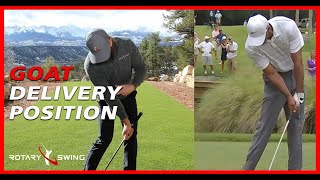
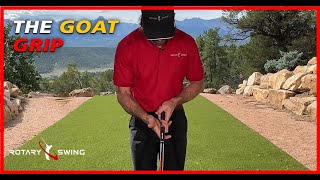
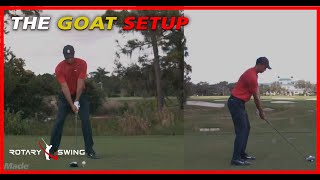
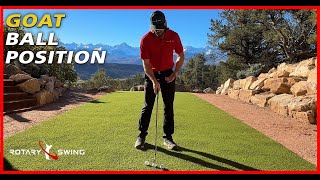
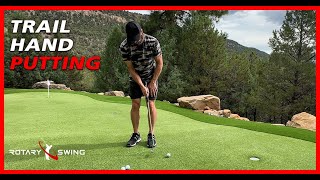

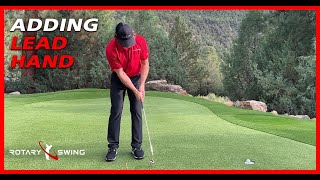

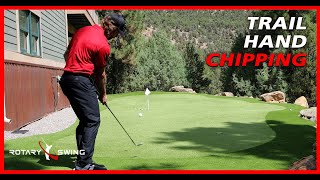
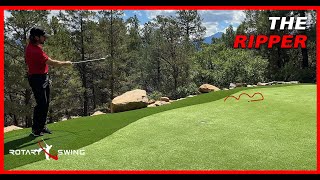
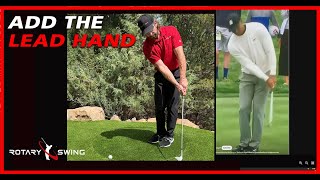




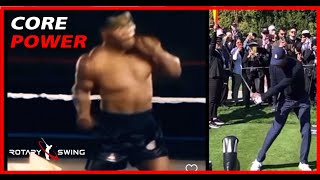
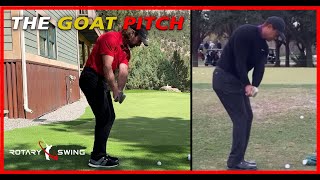
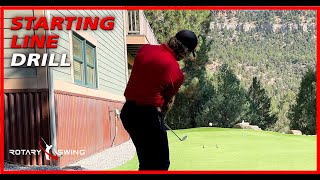
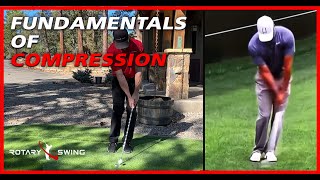
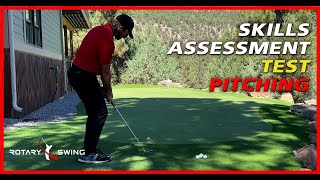
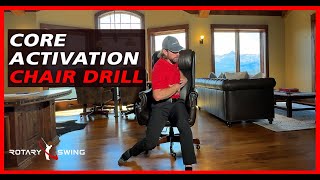
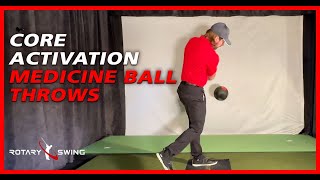
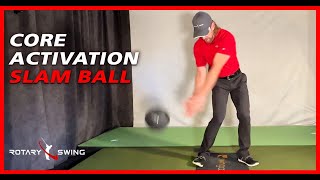
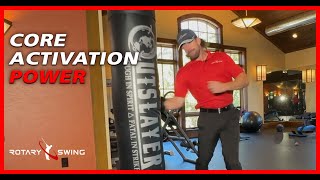
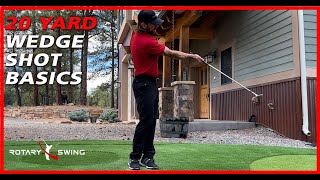
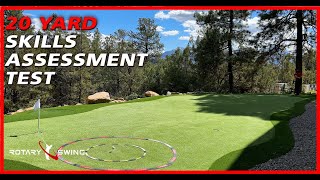
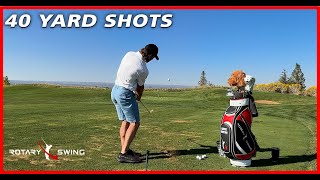
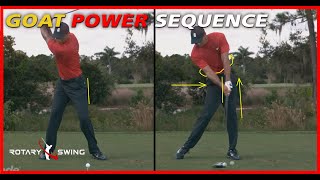
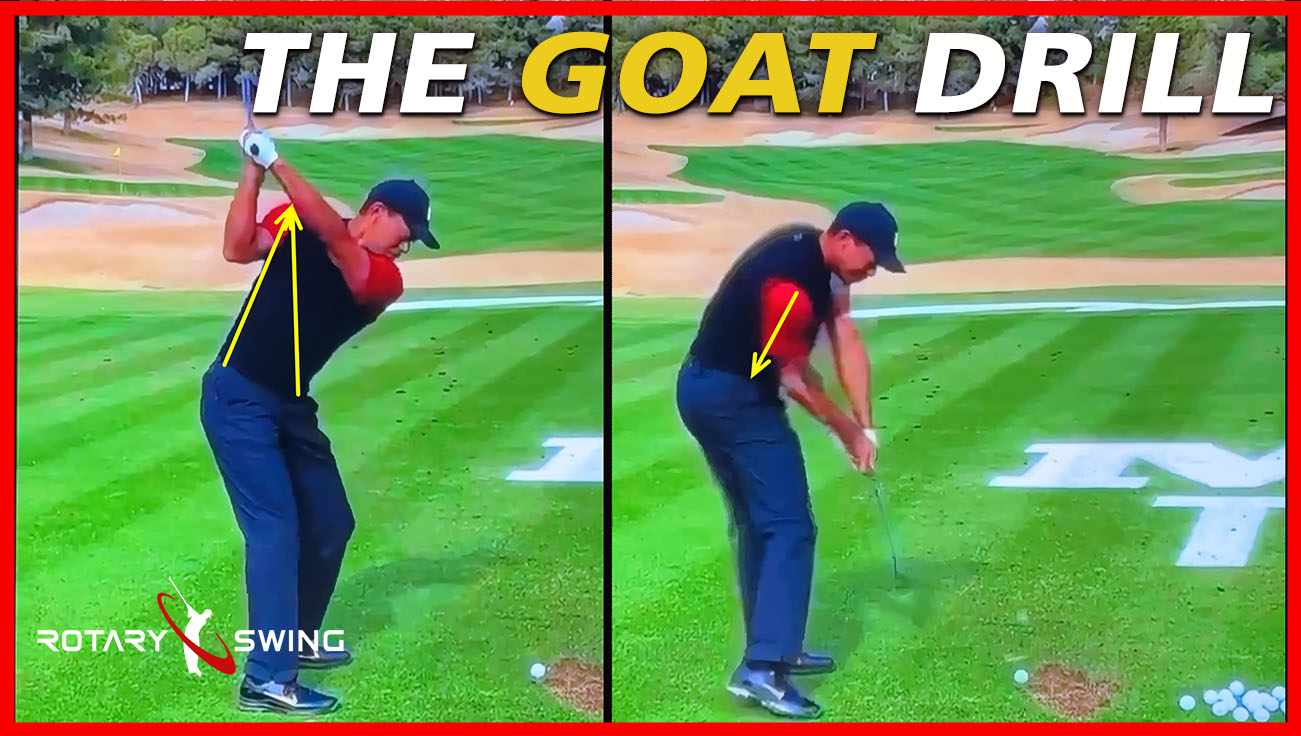
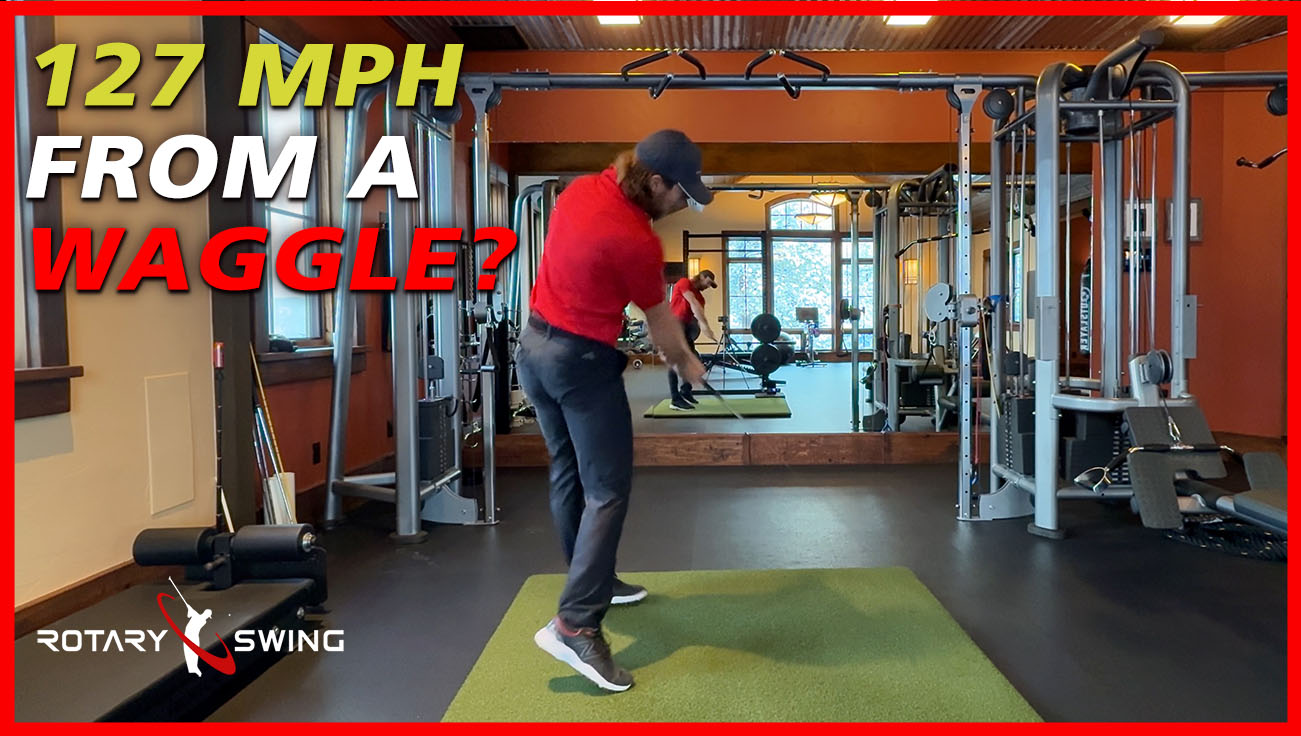
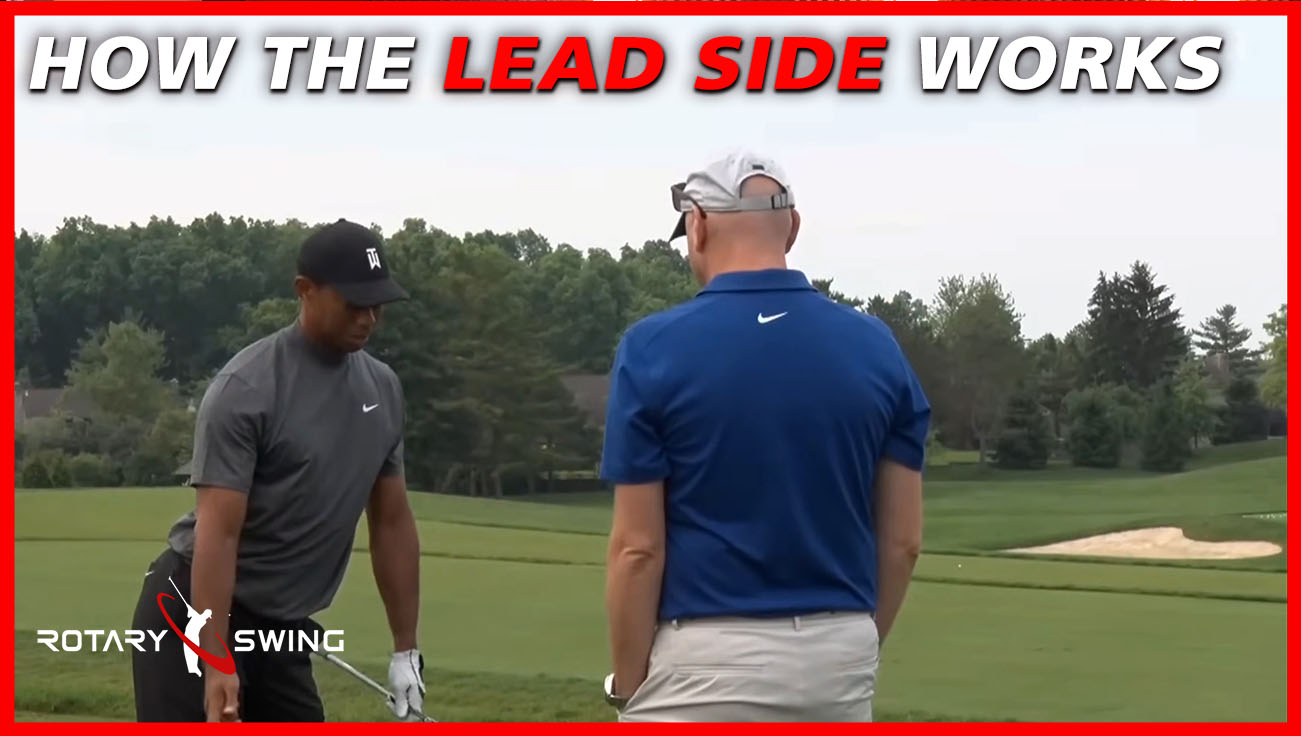
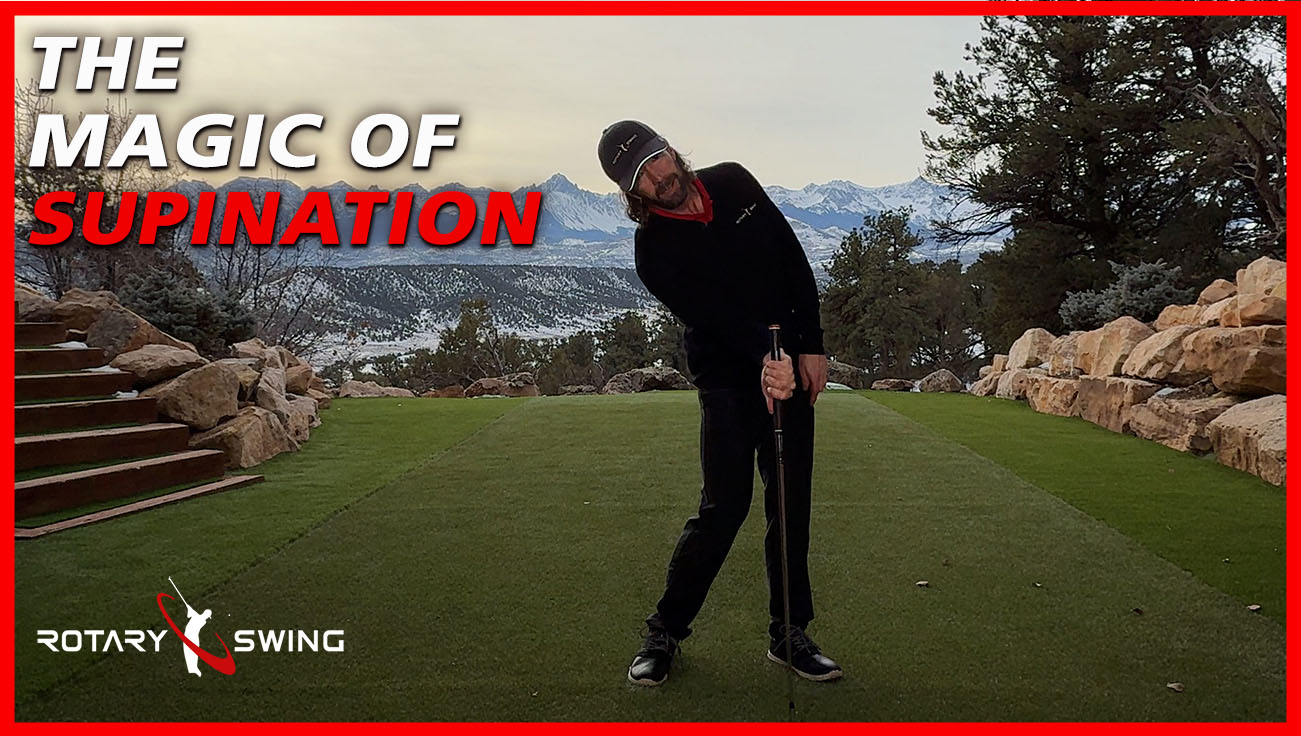
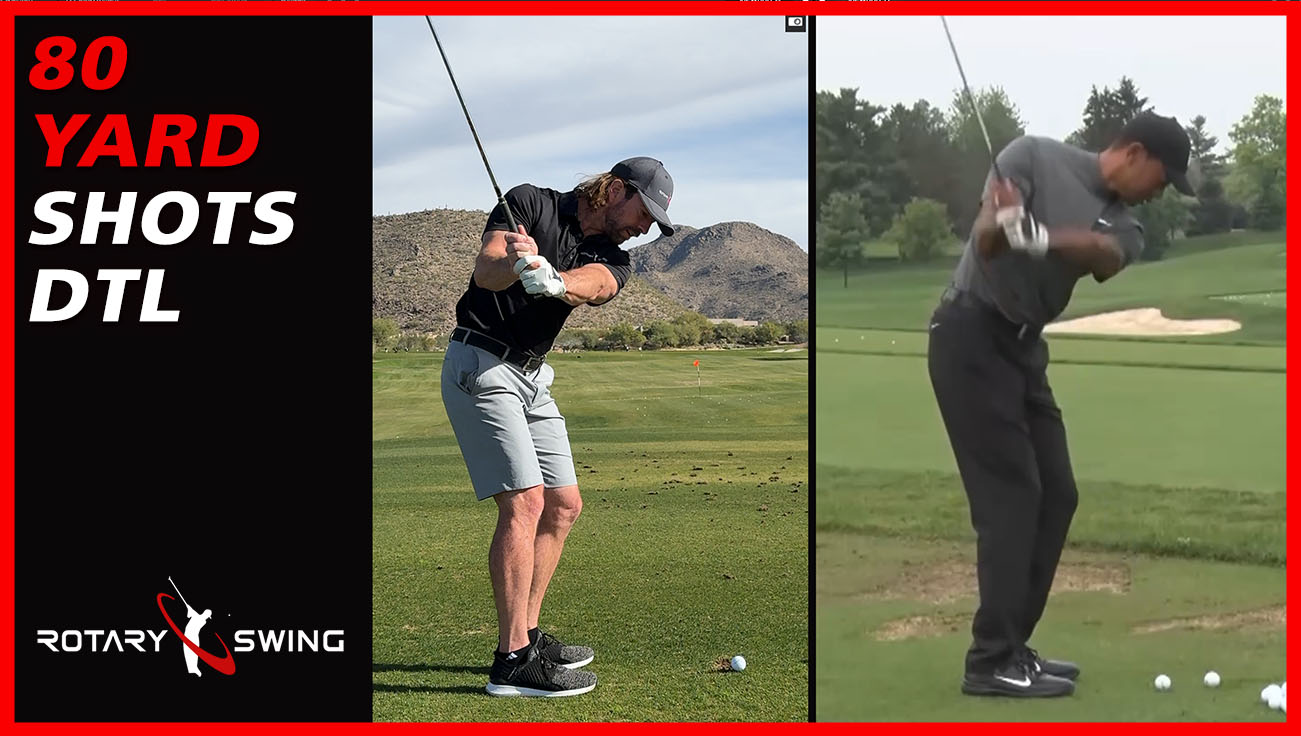
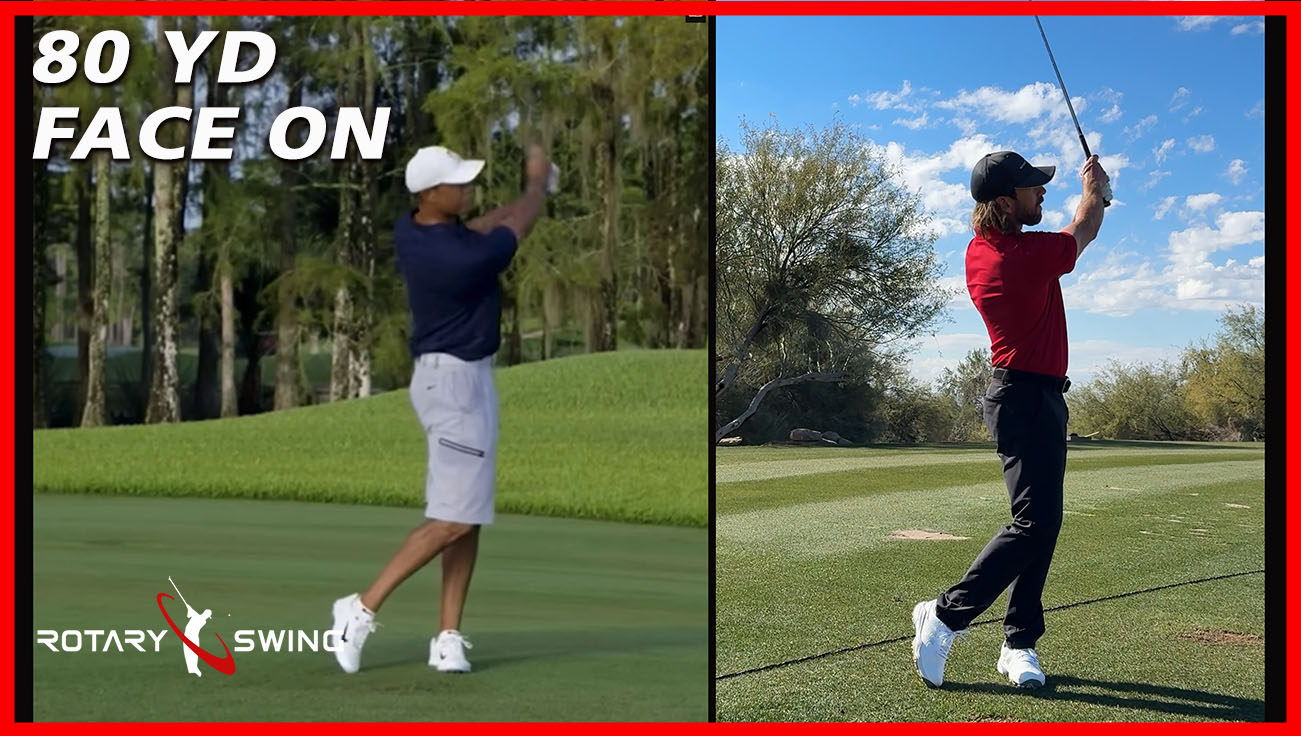
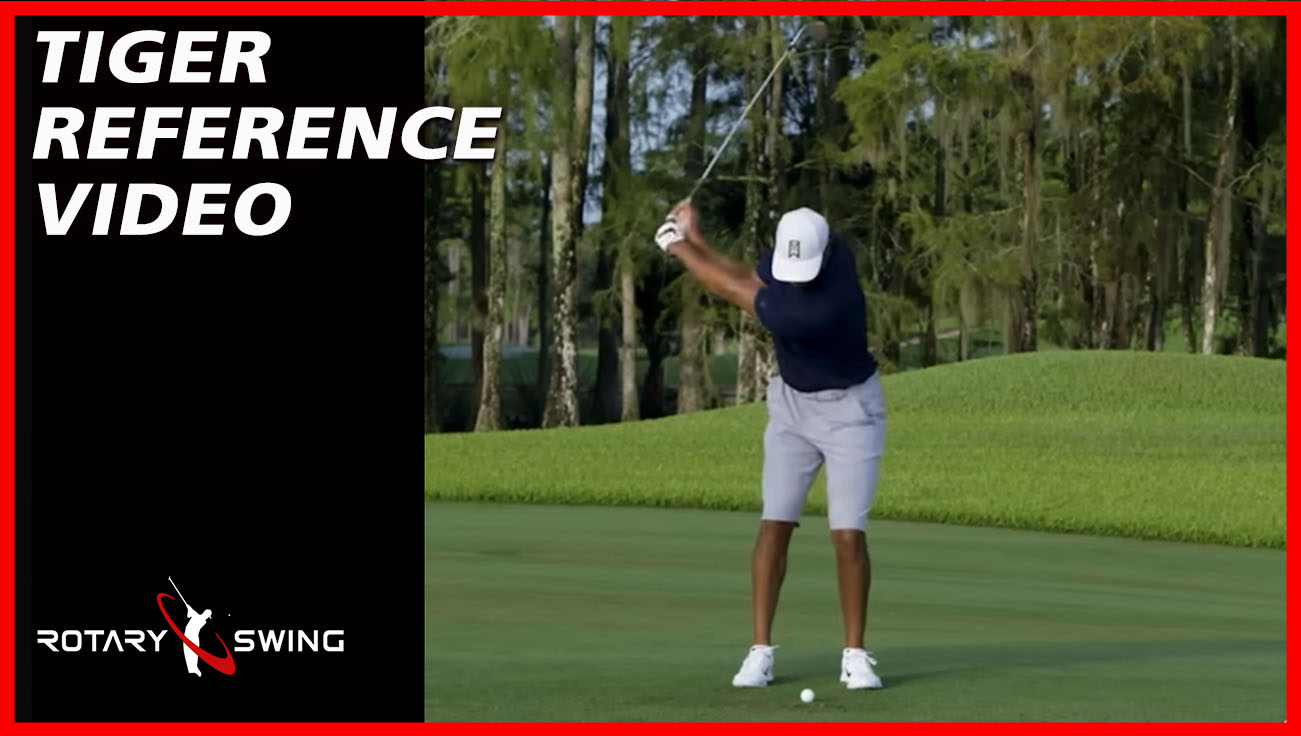

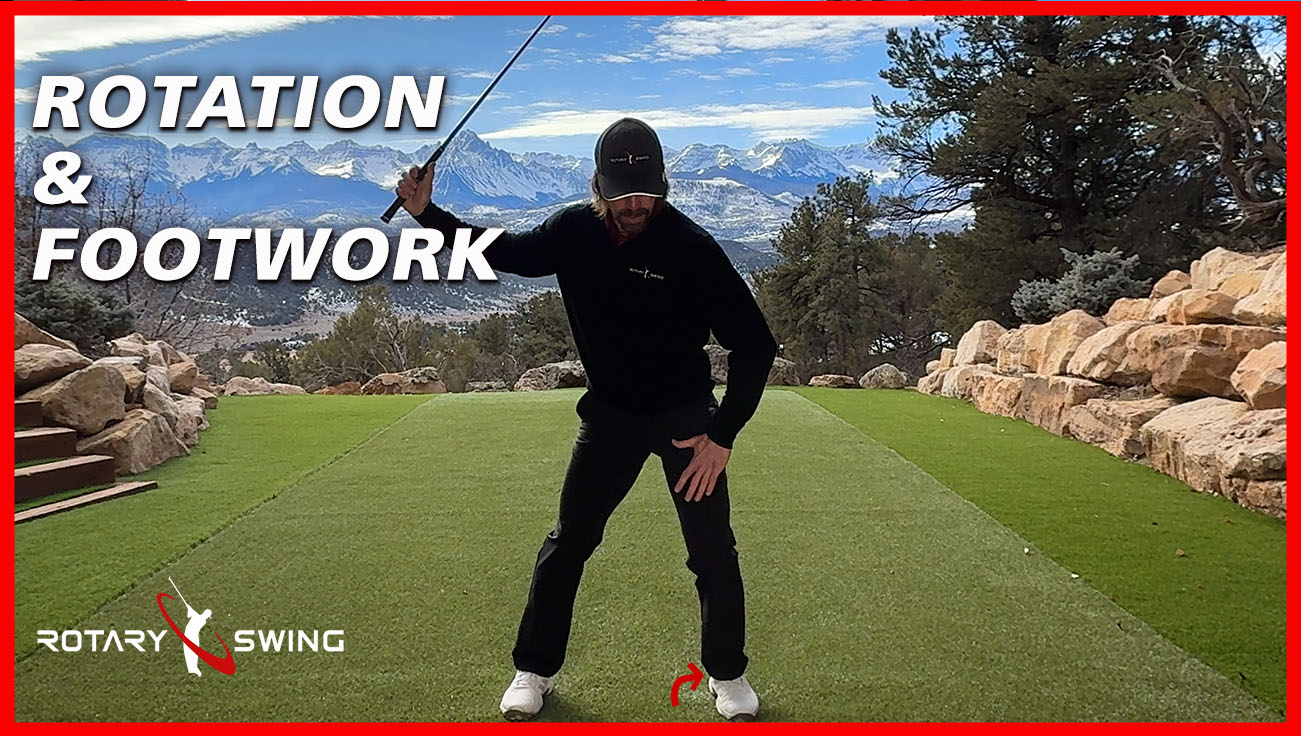
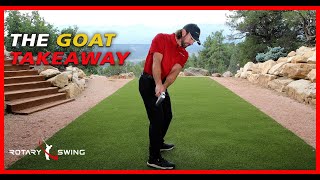

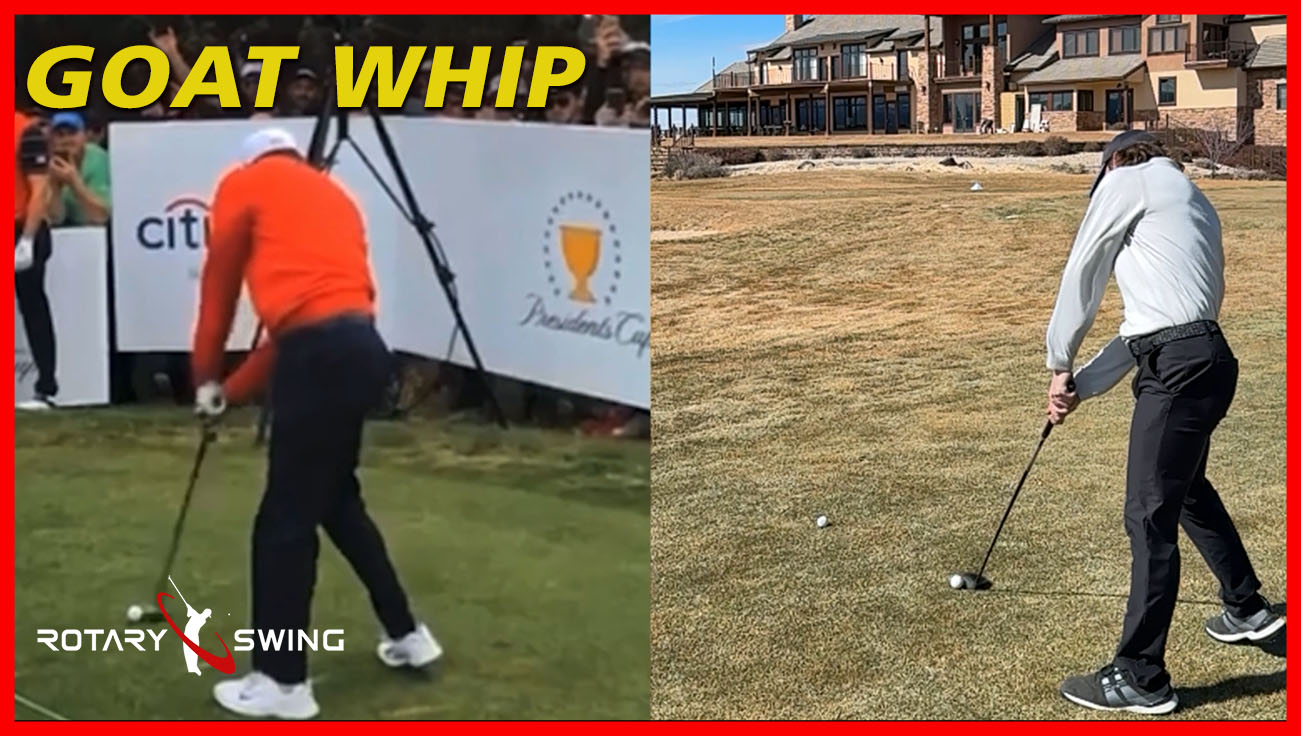
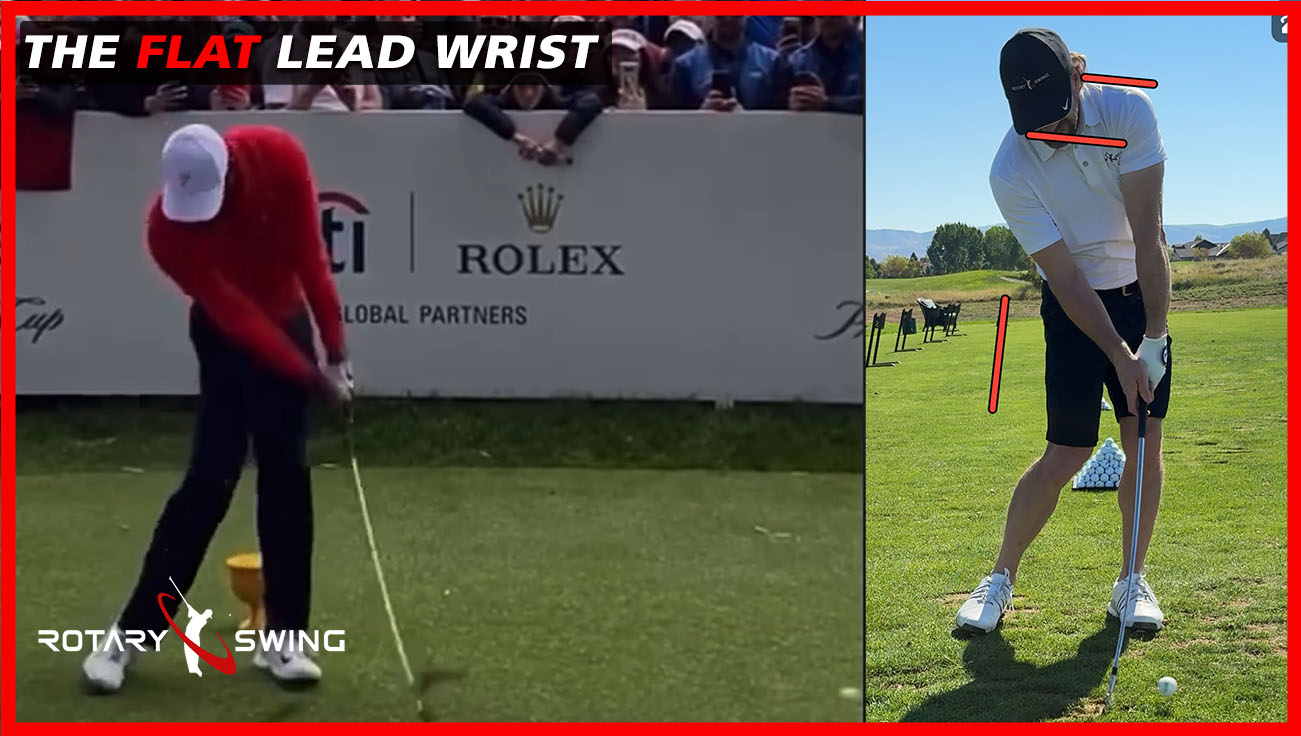
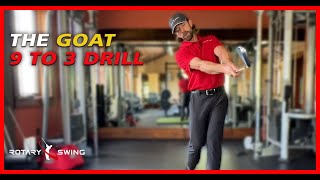
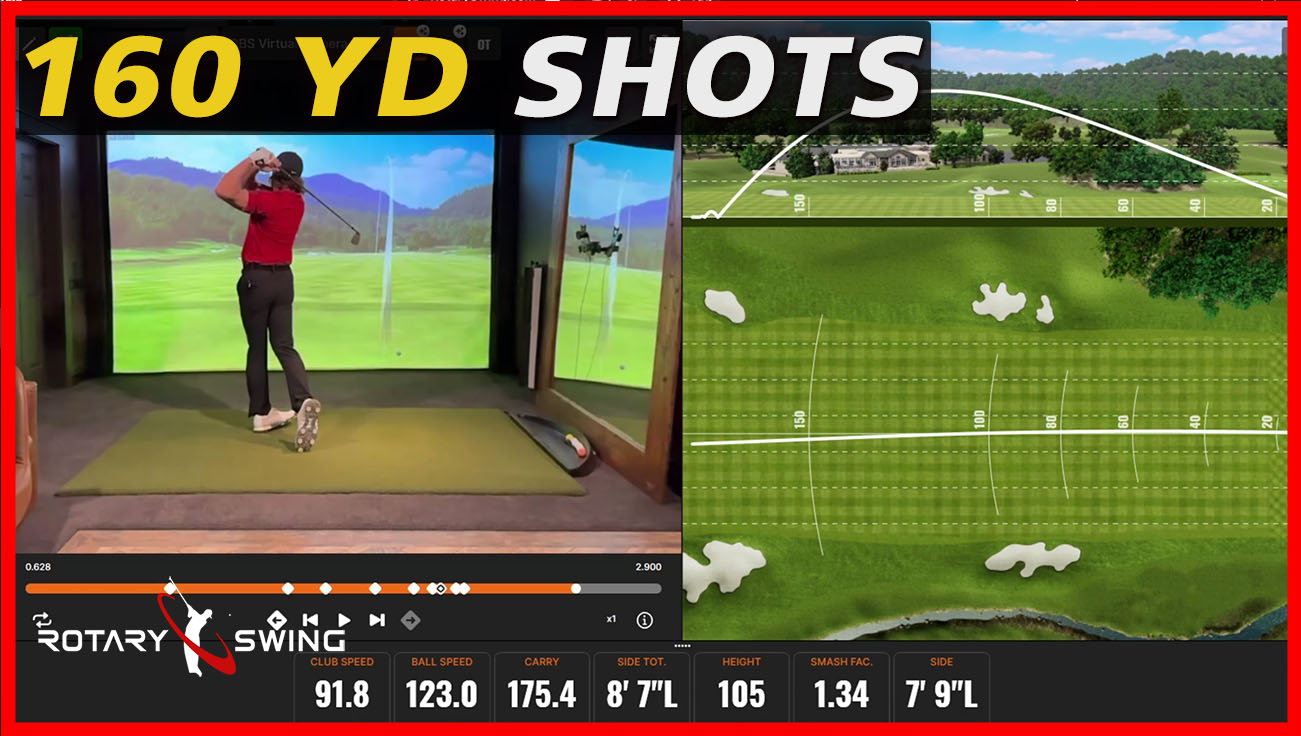

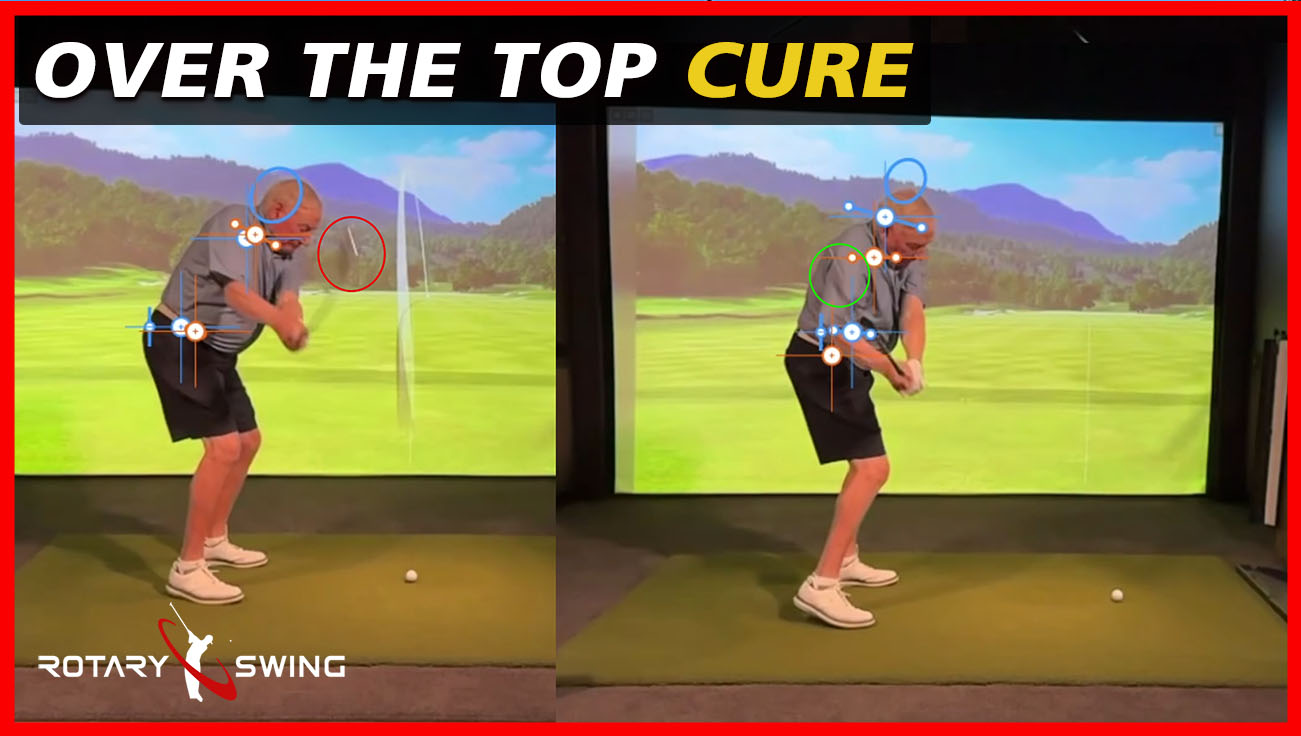
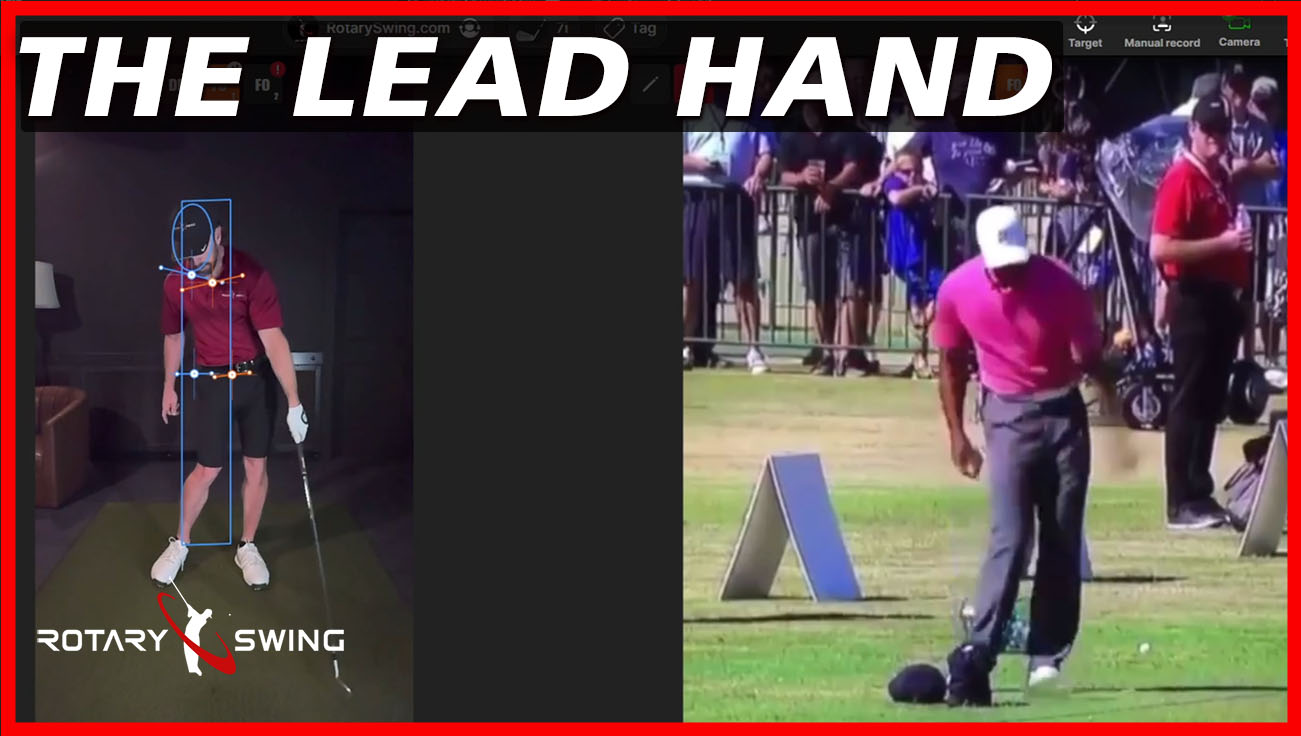
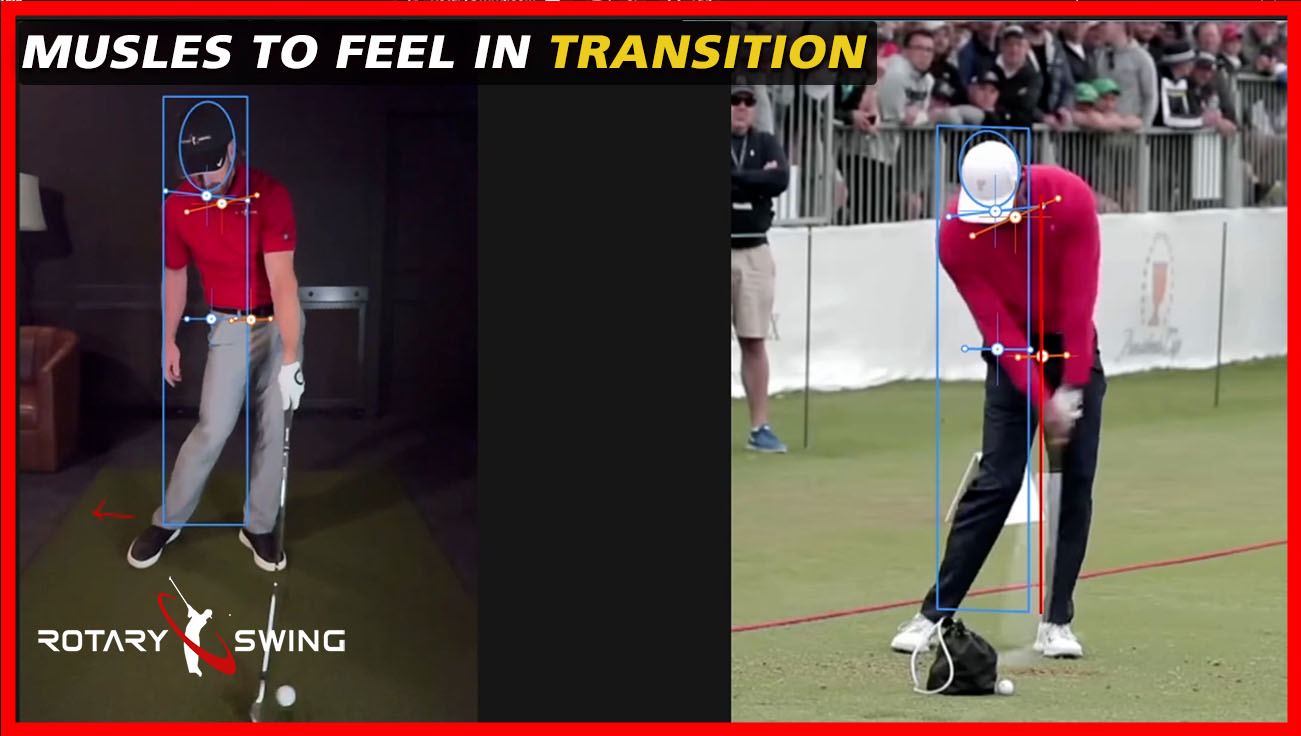
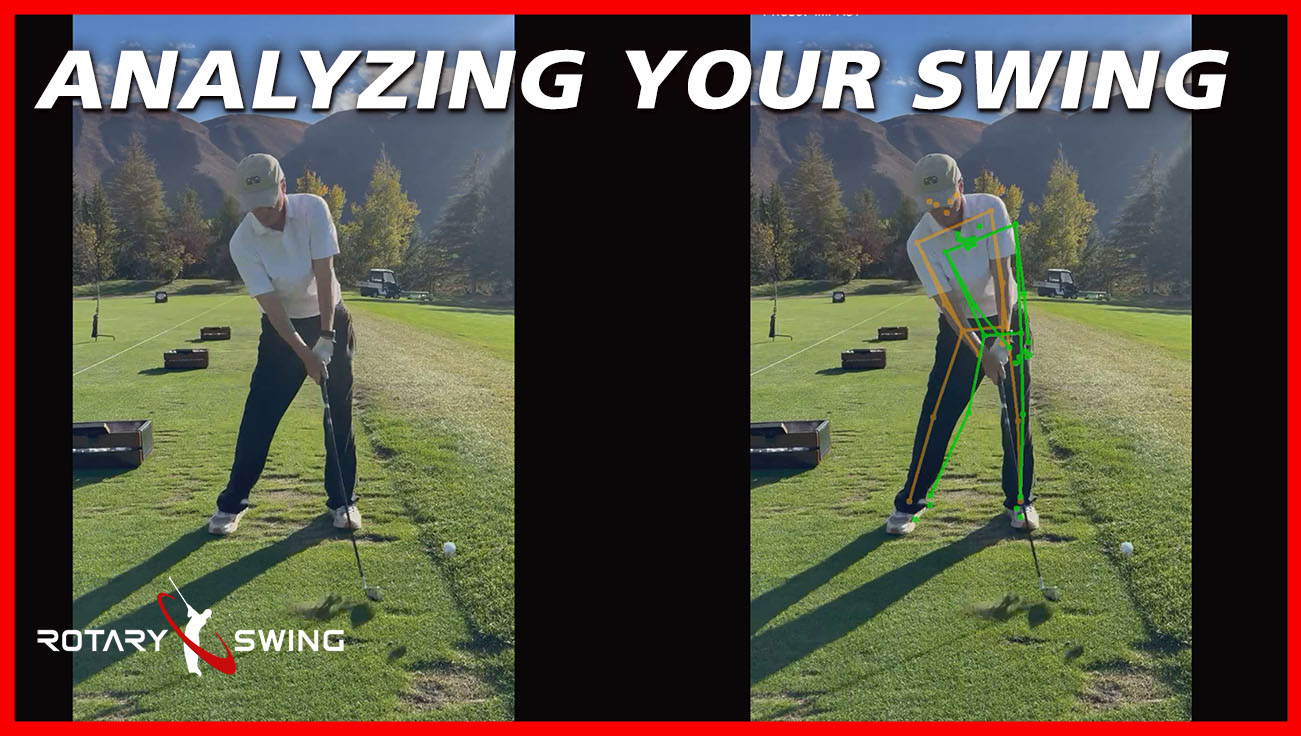

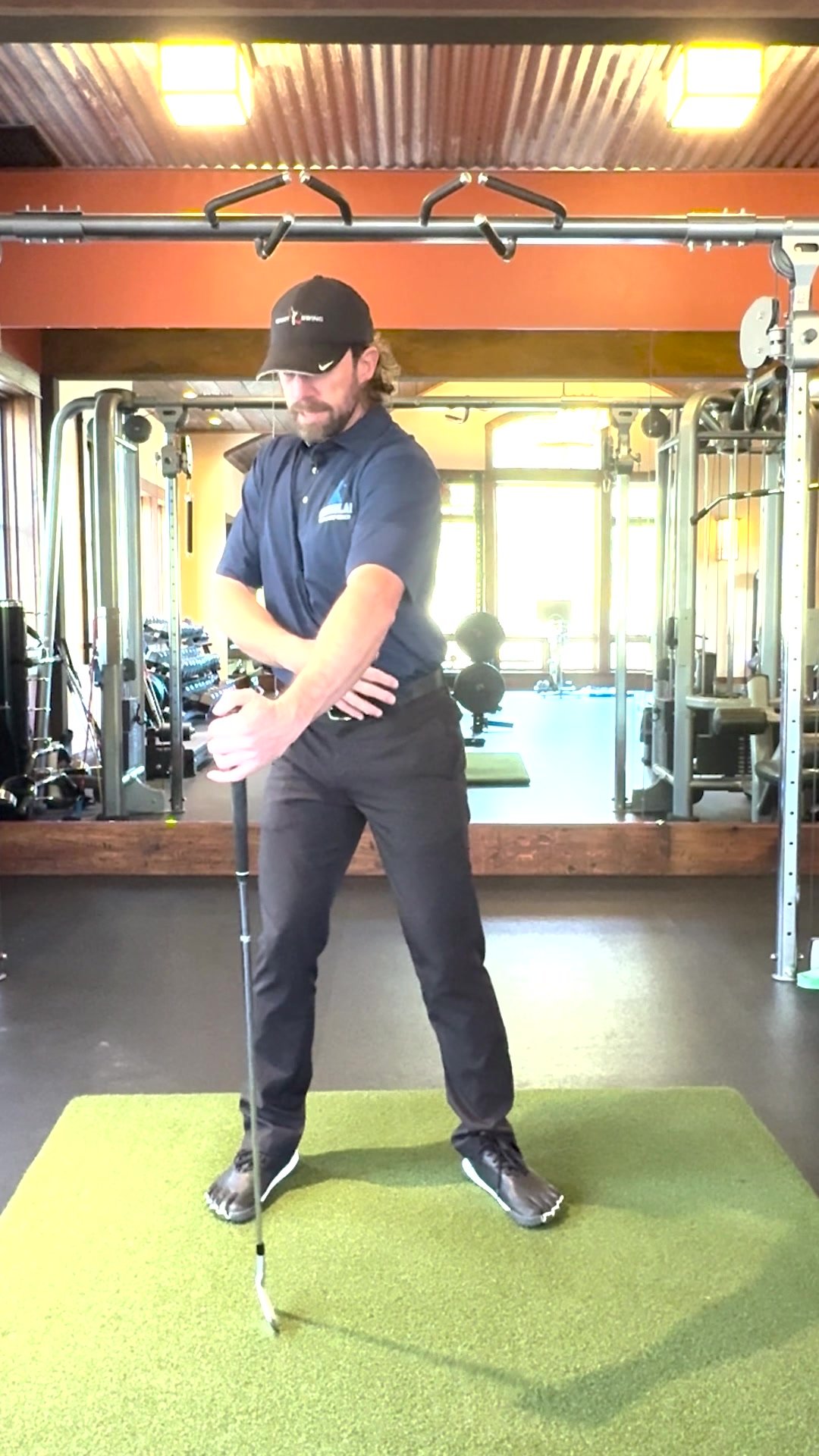

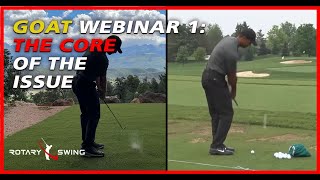
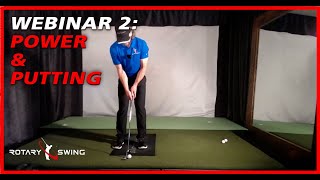
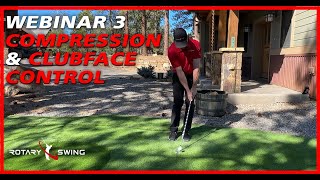
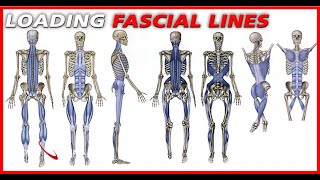
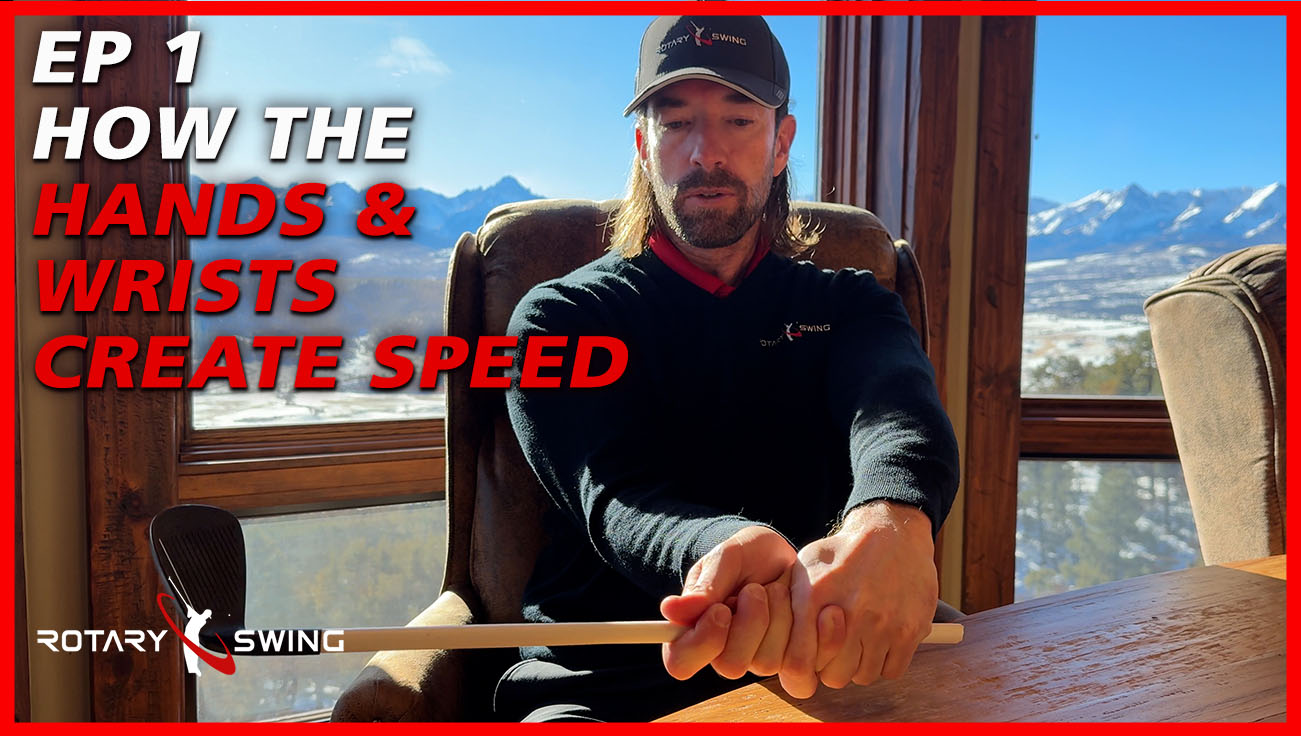

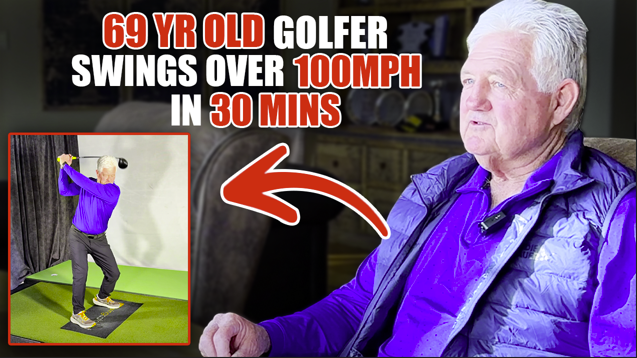
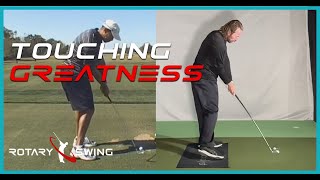



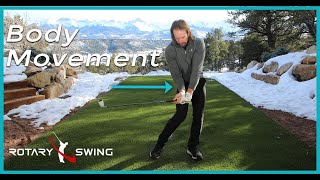

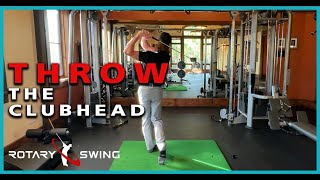
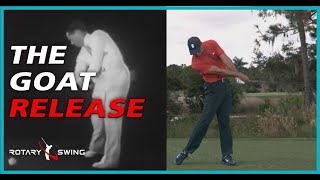
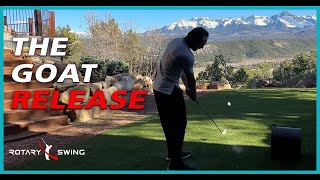
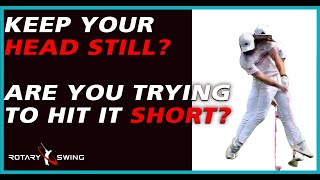
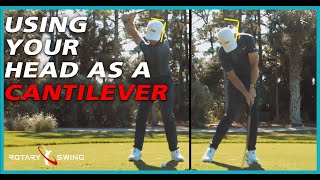
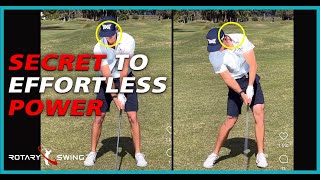
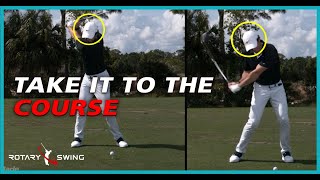

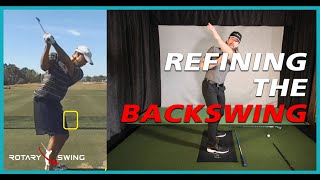

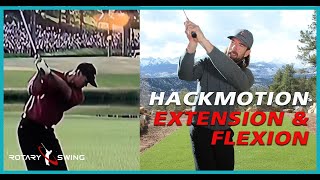
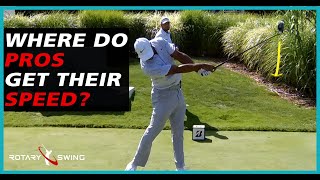
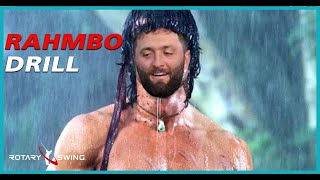

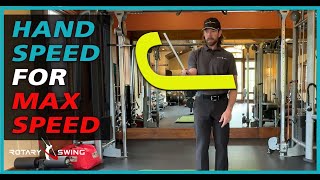
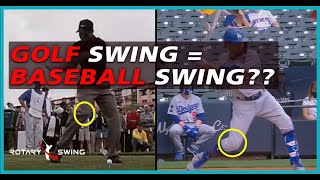
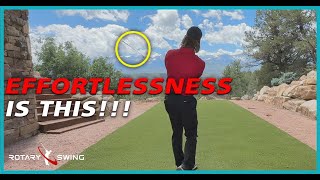

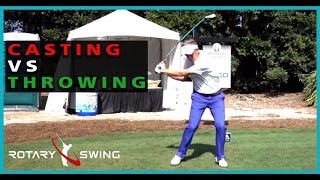
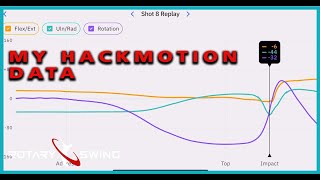
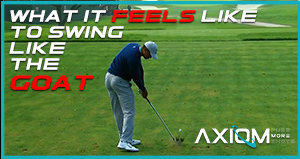



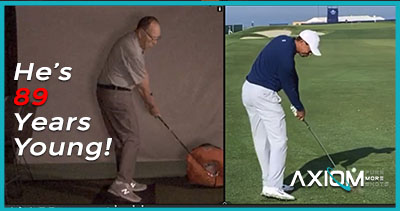

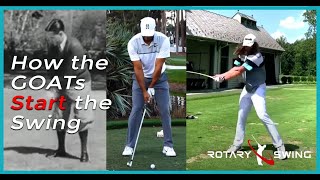
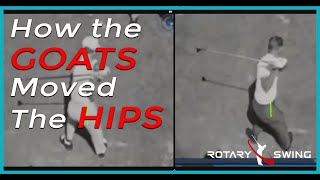
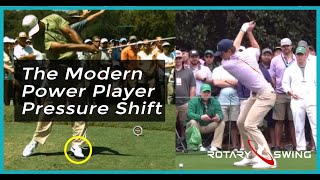
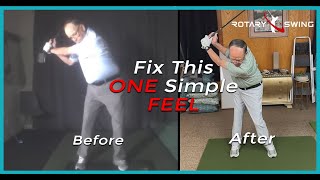
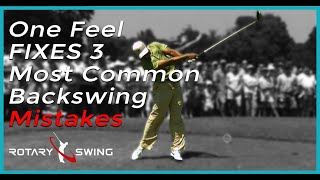
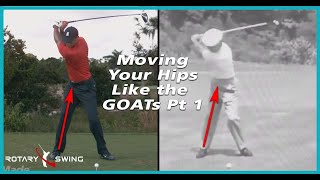
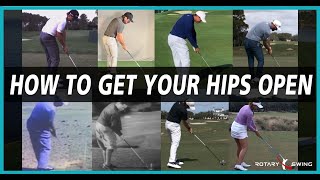

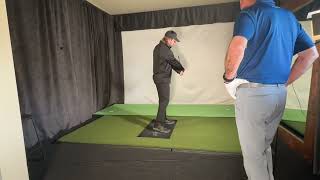
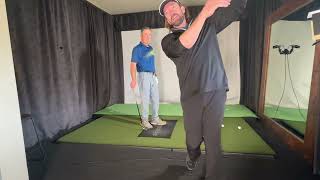
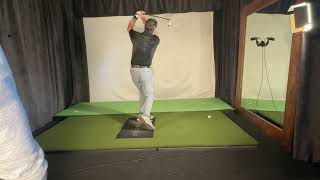
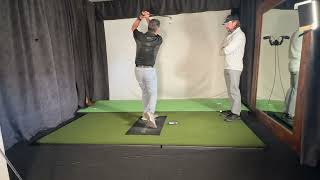
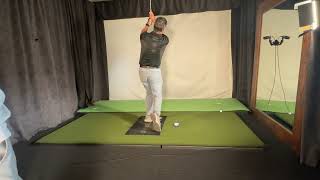
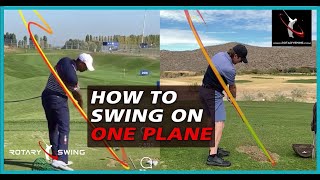
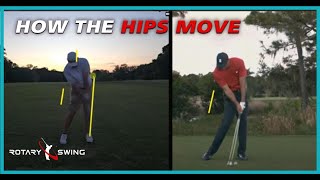
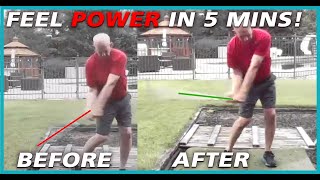
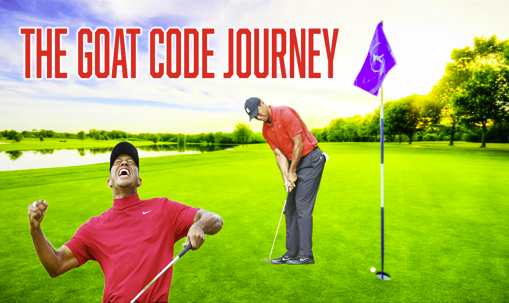
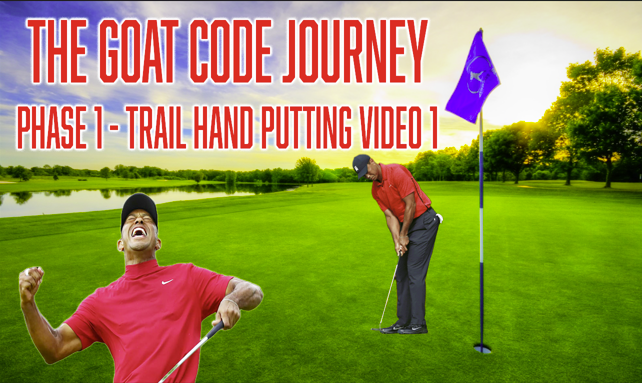
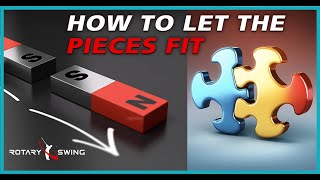


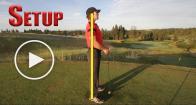
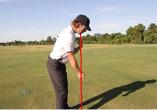
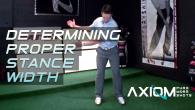
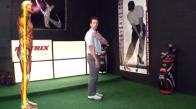
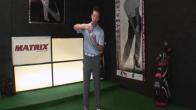
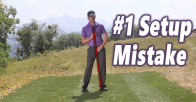

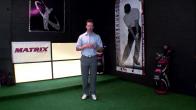
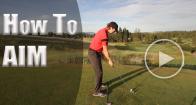
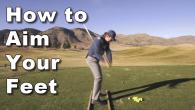
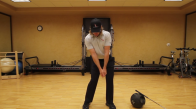
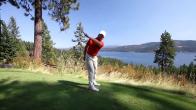
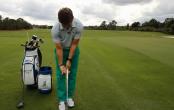

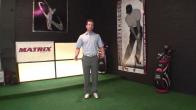


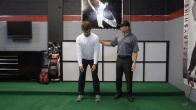

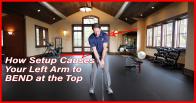


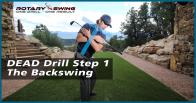
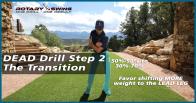
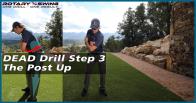

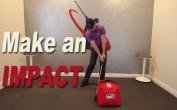
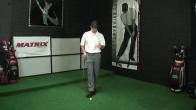
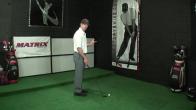
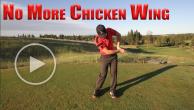
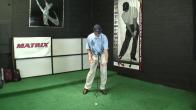


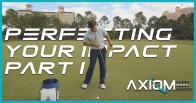
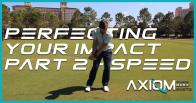
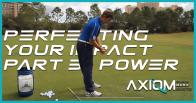
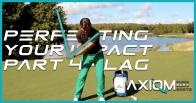

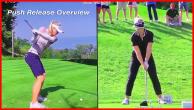

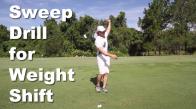


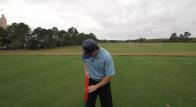
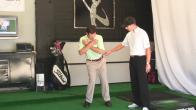
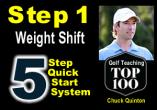
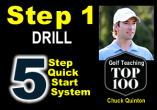
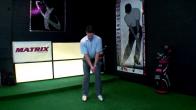
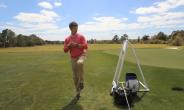

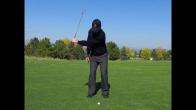
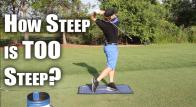
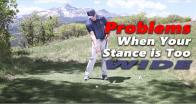
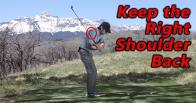
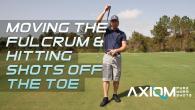
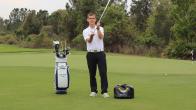
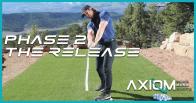
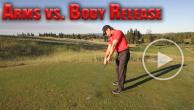
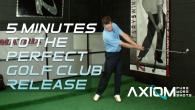
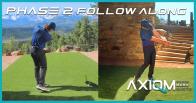
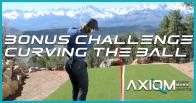

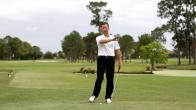
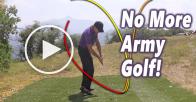
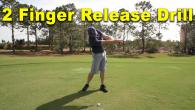
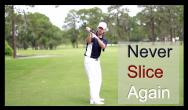
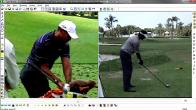
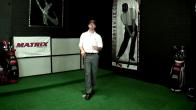
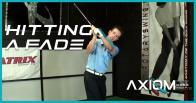
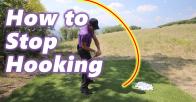
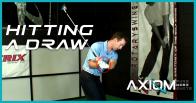


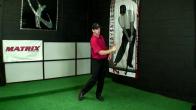
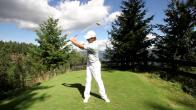

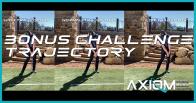
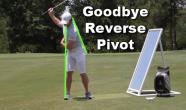
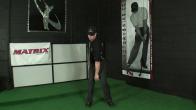
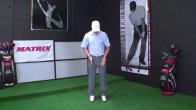
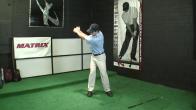
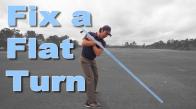
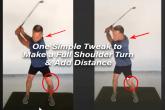
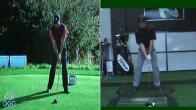
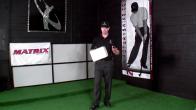

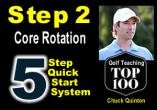
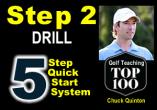
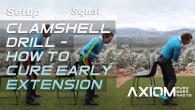

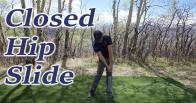

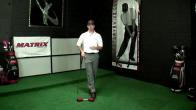
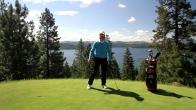
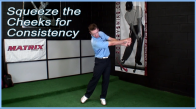
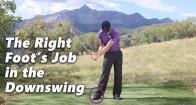
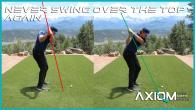
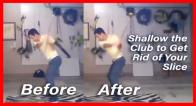


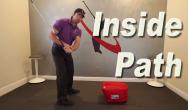

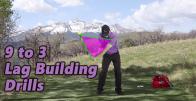

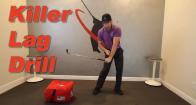
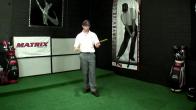
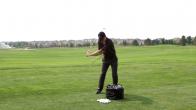
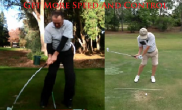


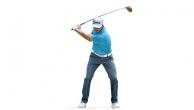
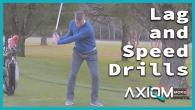
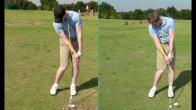


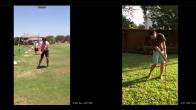



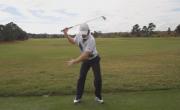
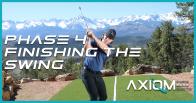
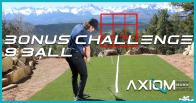


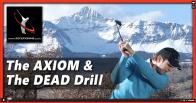




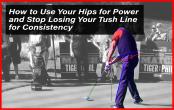
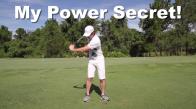
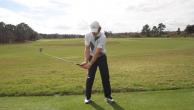
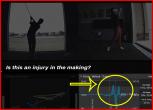
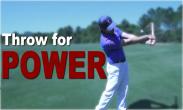


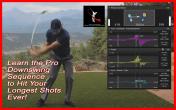
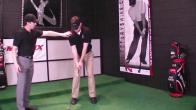
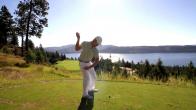

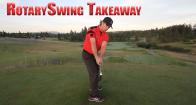


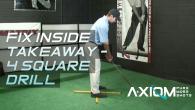
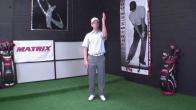
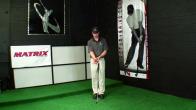


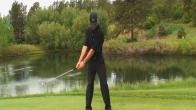
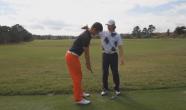
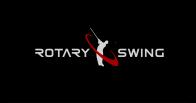
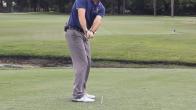

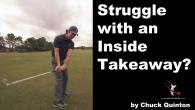
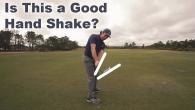

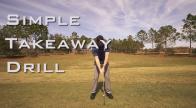

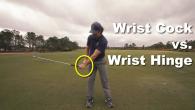
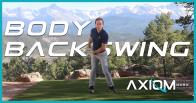

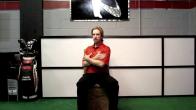
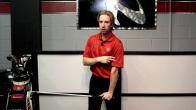


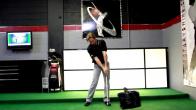
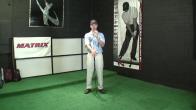
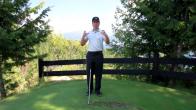
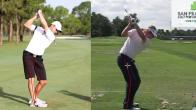
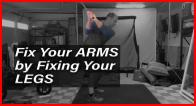
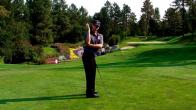
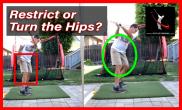
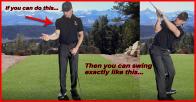

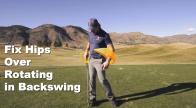
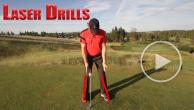
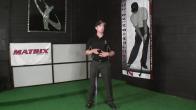

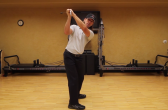
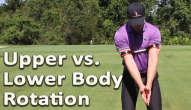
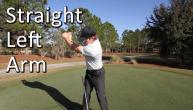


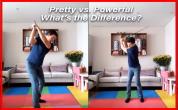






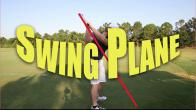
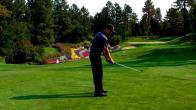
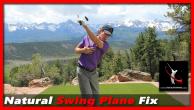
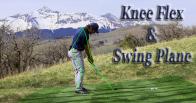
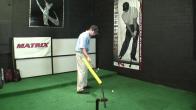

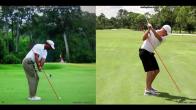






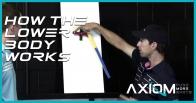
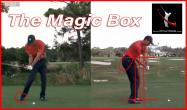
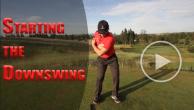

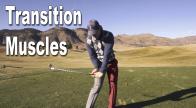
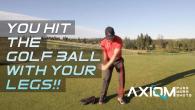

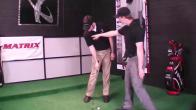
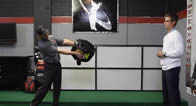
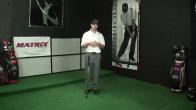
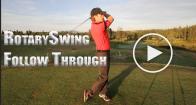
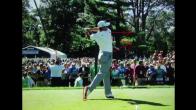
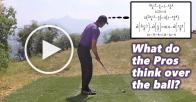
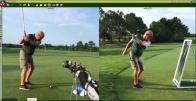


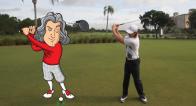
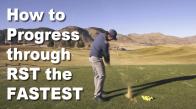
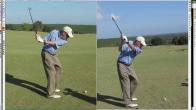


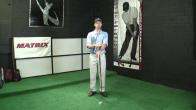
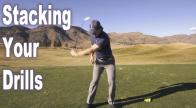
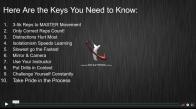
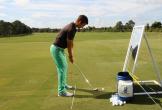

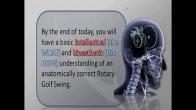
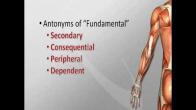
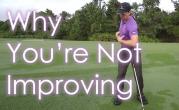
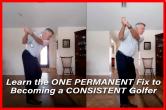

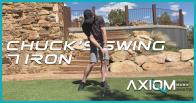



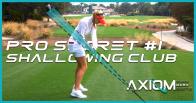
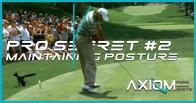

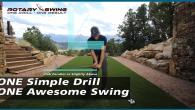

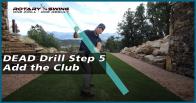

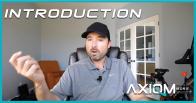
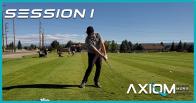
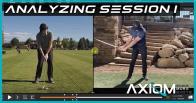

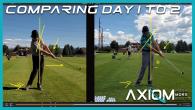
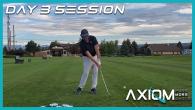

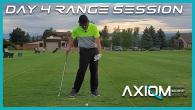

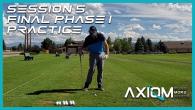


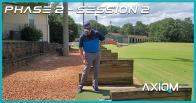
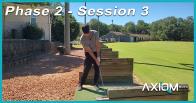
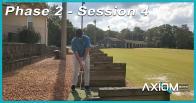
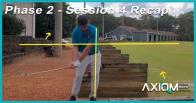
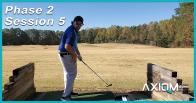

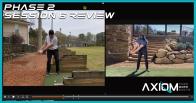
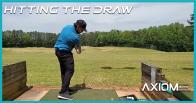


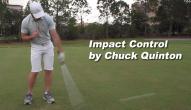
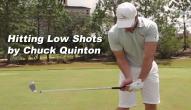


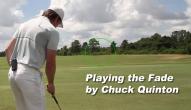
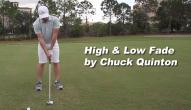

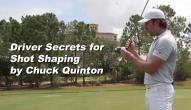
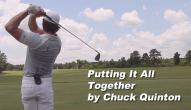

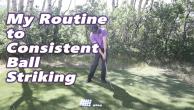

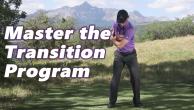

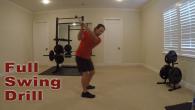
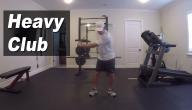
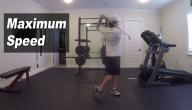
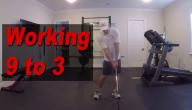
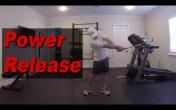
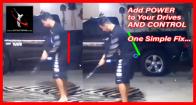
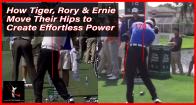
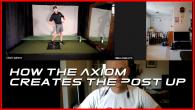
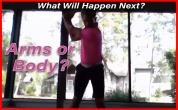
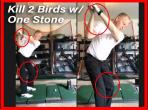
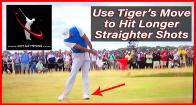

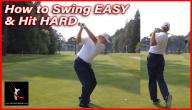
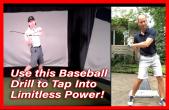
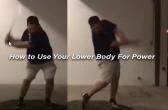
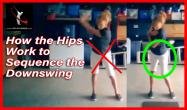
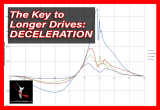
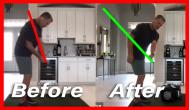
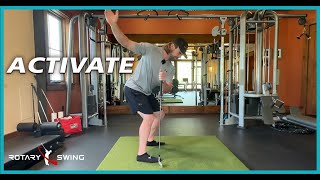
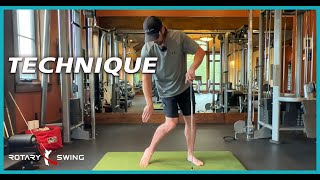
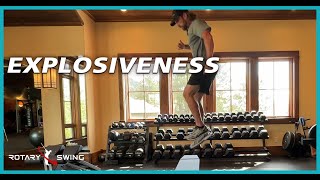
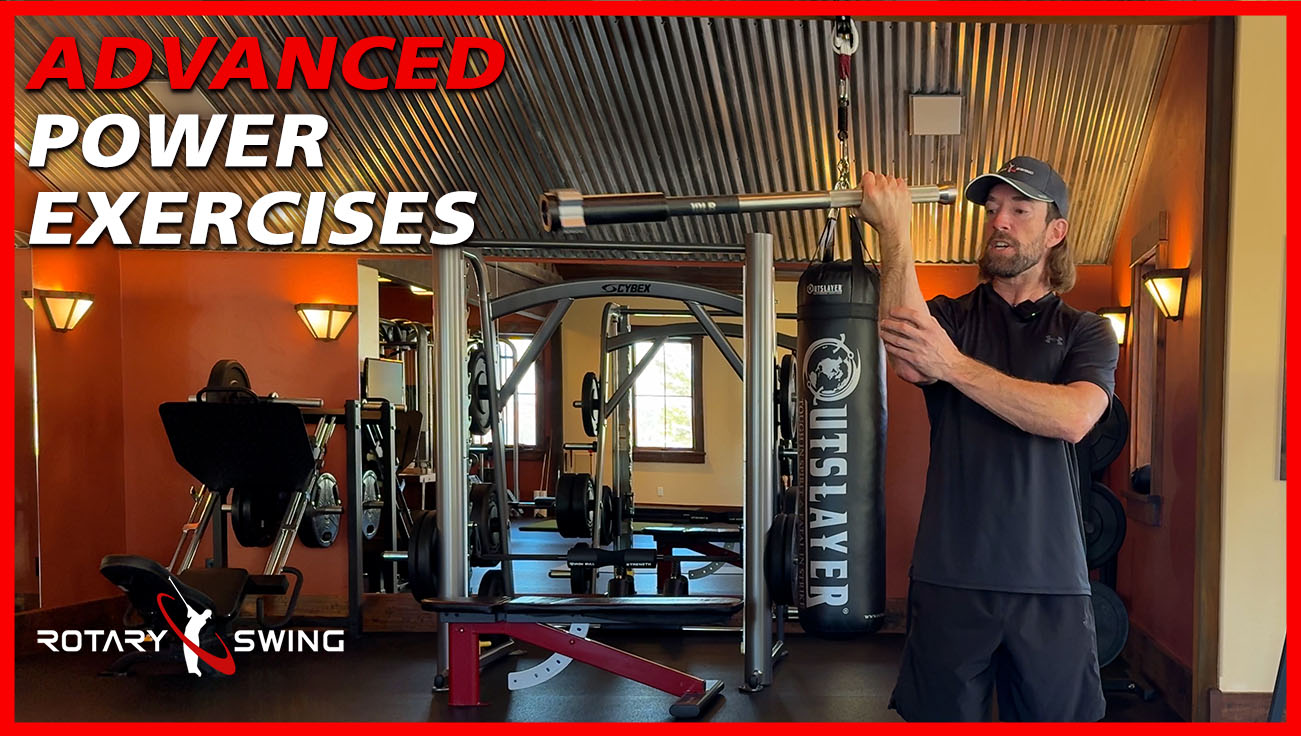
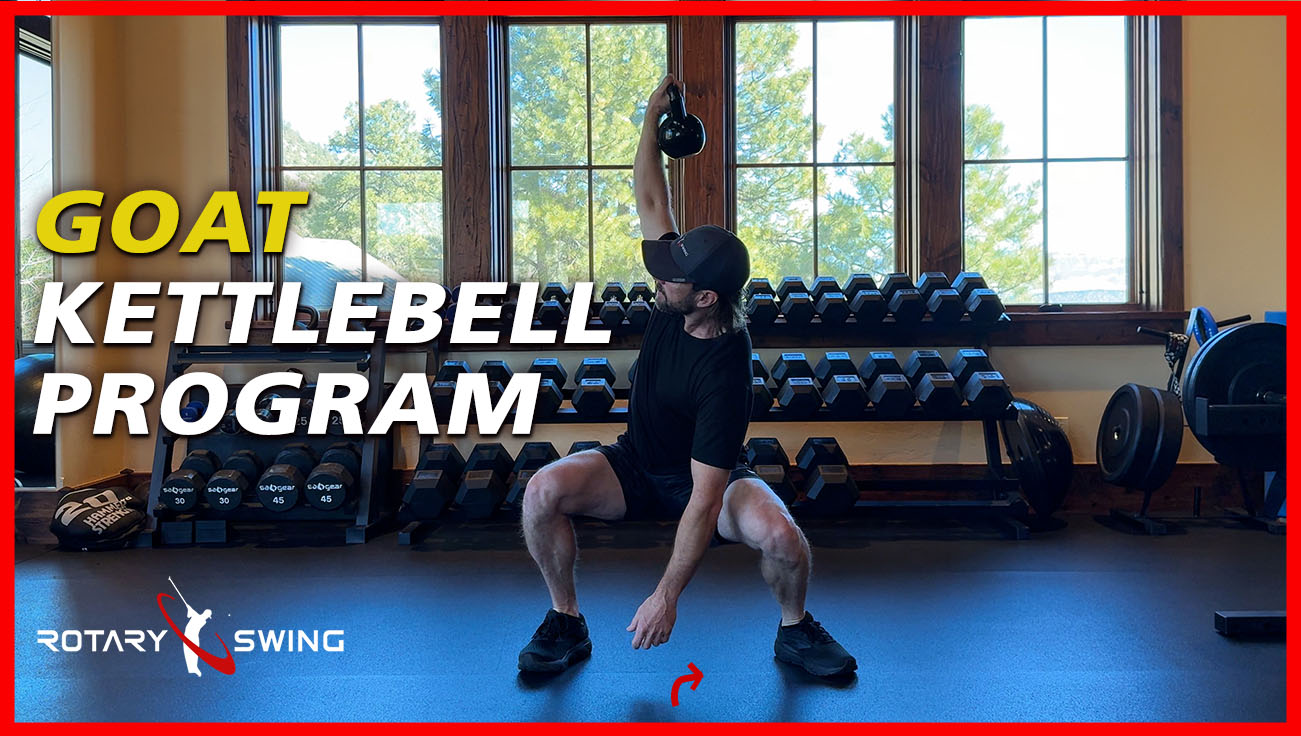

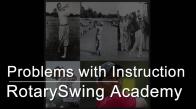
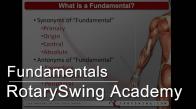
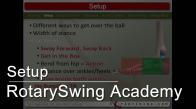


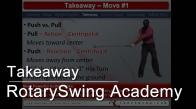
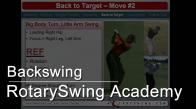
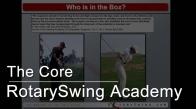
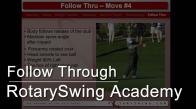



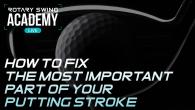
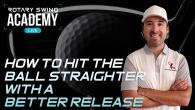
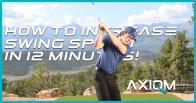
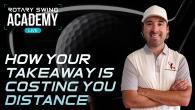
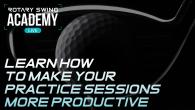
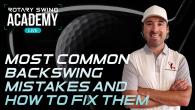
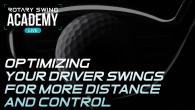
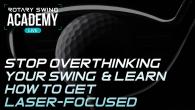



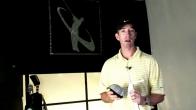
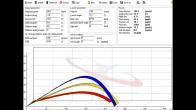

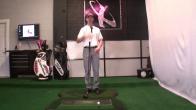
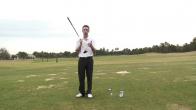
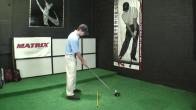
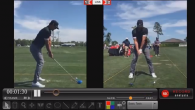

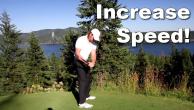
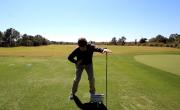

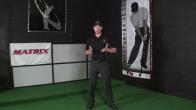
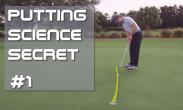
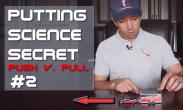

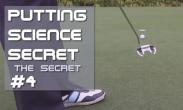
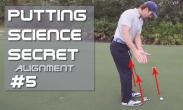
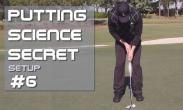
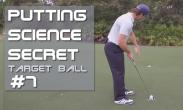
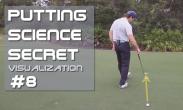
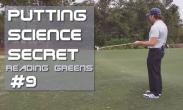





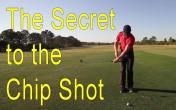
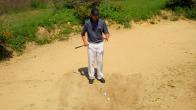

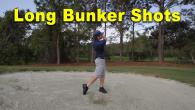

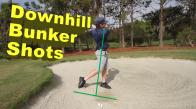
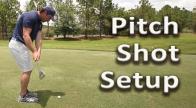
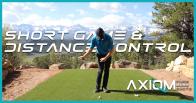
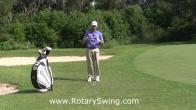
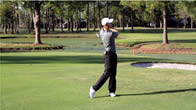
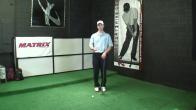
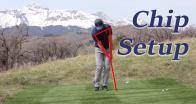


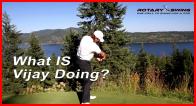





Robert
Chuck
Michael
Chuck
Will
Chuck
Anthony
Chuck
Will
charles
Chuck
Thomas (Tom)
Chuck
Ted
Chuck
Ed
Chuck
Loveneet
Chuck
stephen
Chuck
Jonathan
Chuck
Richard
Chuck
Steve
Chuck
John
Chuck
Christopher
Chuck
Christopher
Chuck
Priyan
Chuck
Richard
Chuck
Asle
Chuck
Asle
Chuck
Venkatesh
Scott
Chuck
Scott
Chuck
Dennis
Chuck
Dennis
Chuck
Dennis
Chuck
Craig
Chetan
Johnny
Venkatesh
Chuck
Christopher
Chuck
Venkatesh
Anthony (Certified RST Instructor)
Venkatesh
Chuck
glenn
Chuck
michael
Chuck